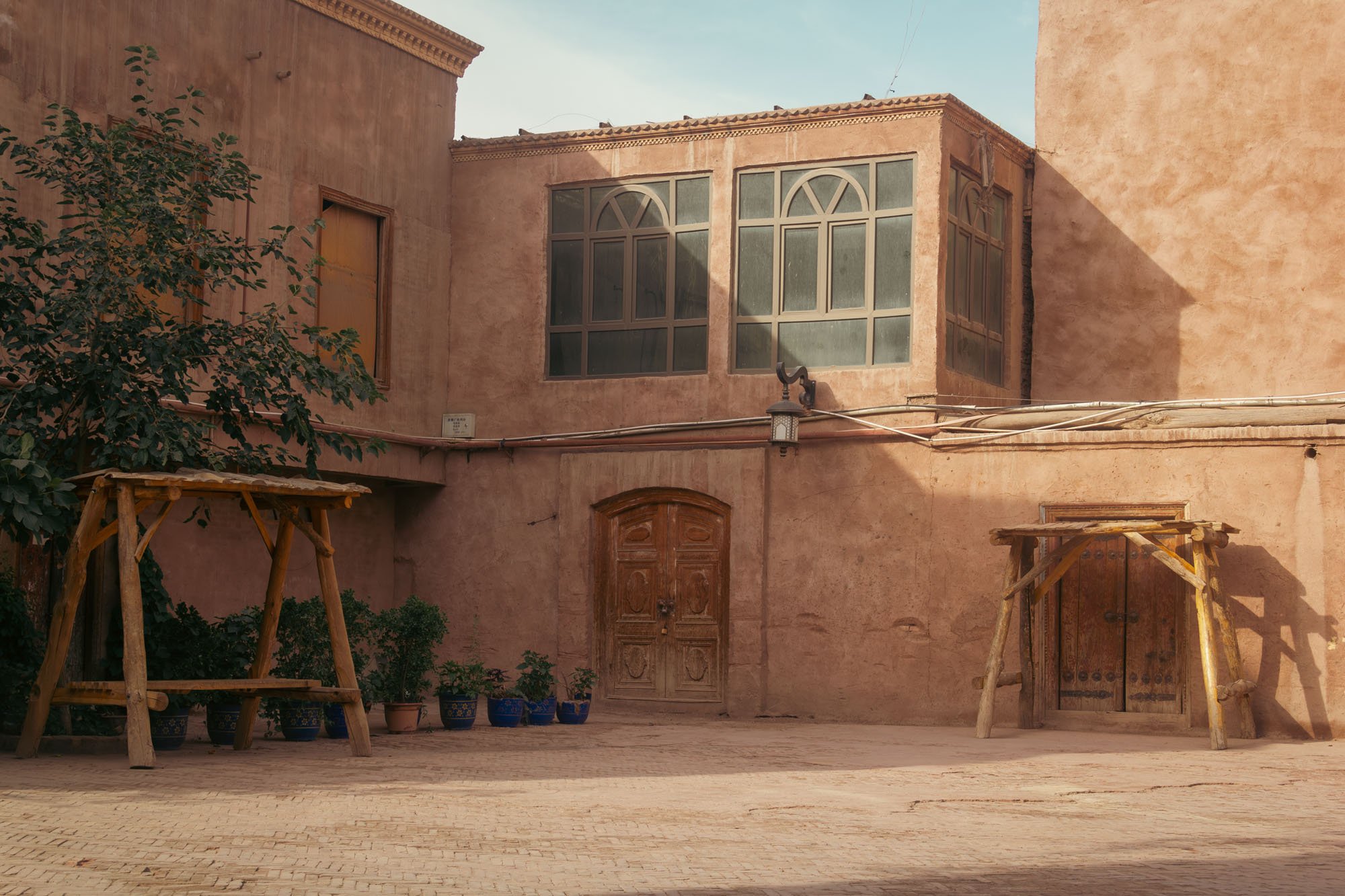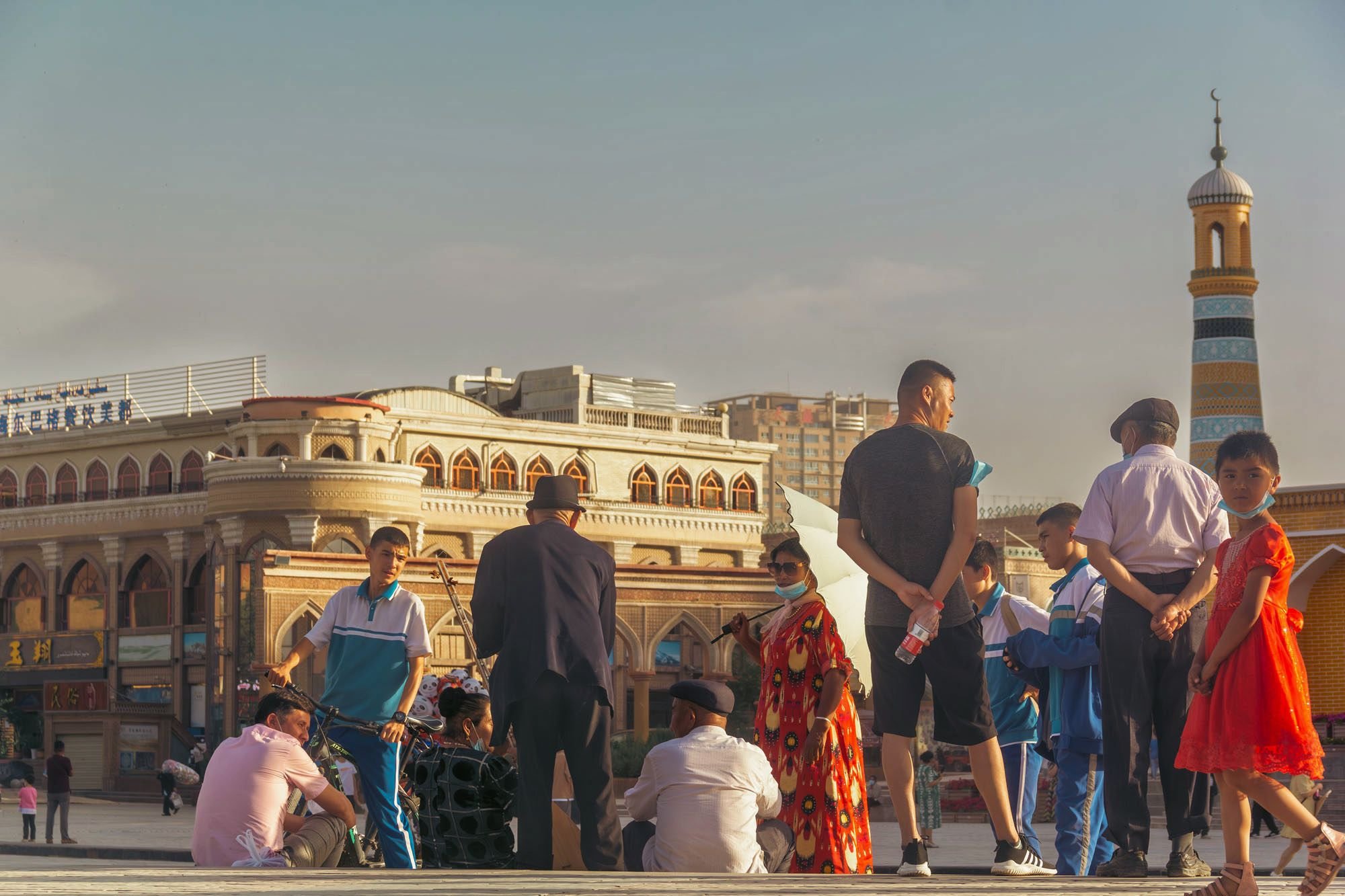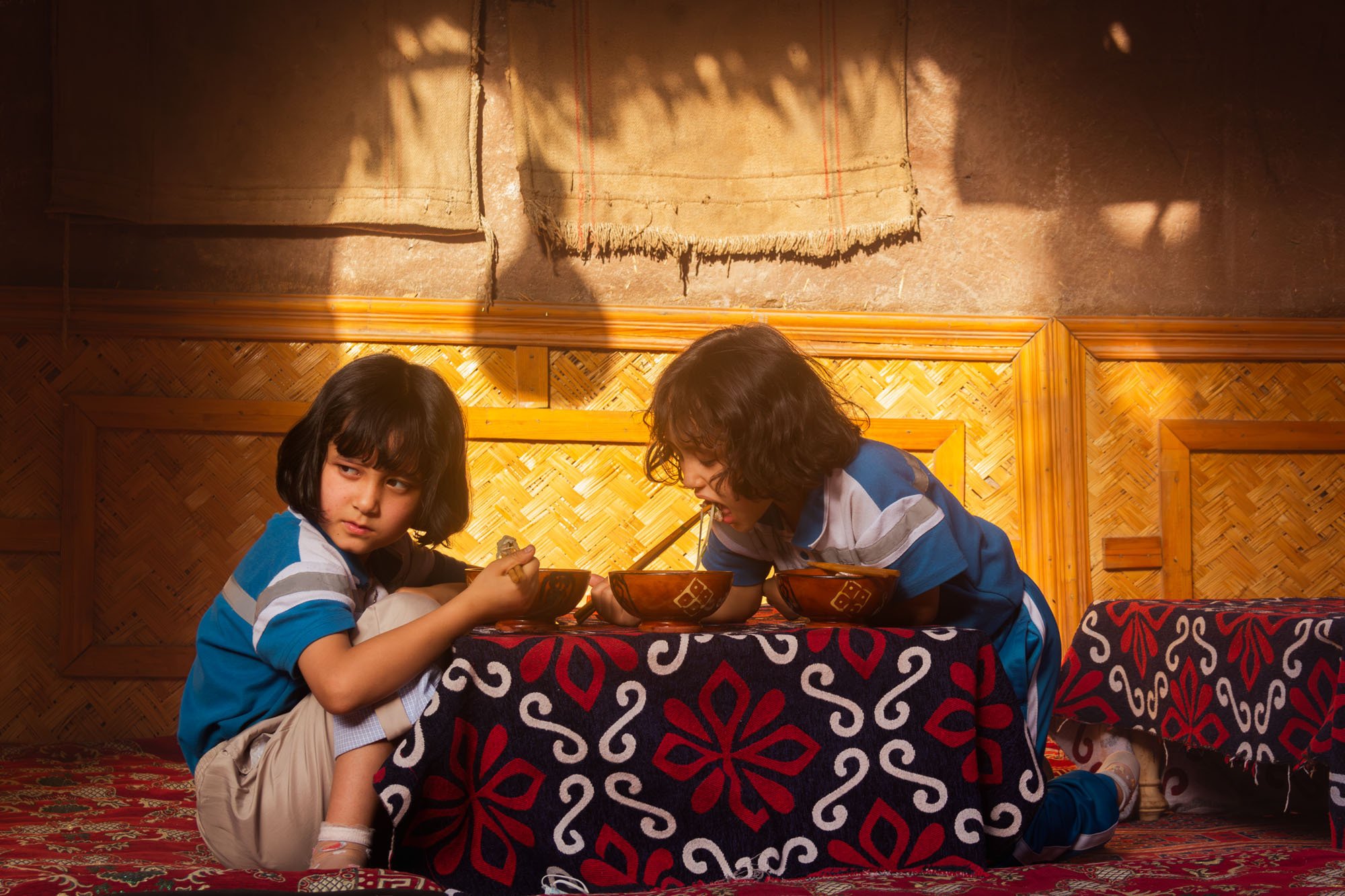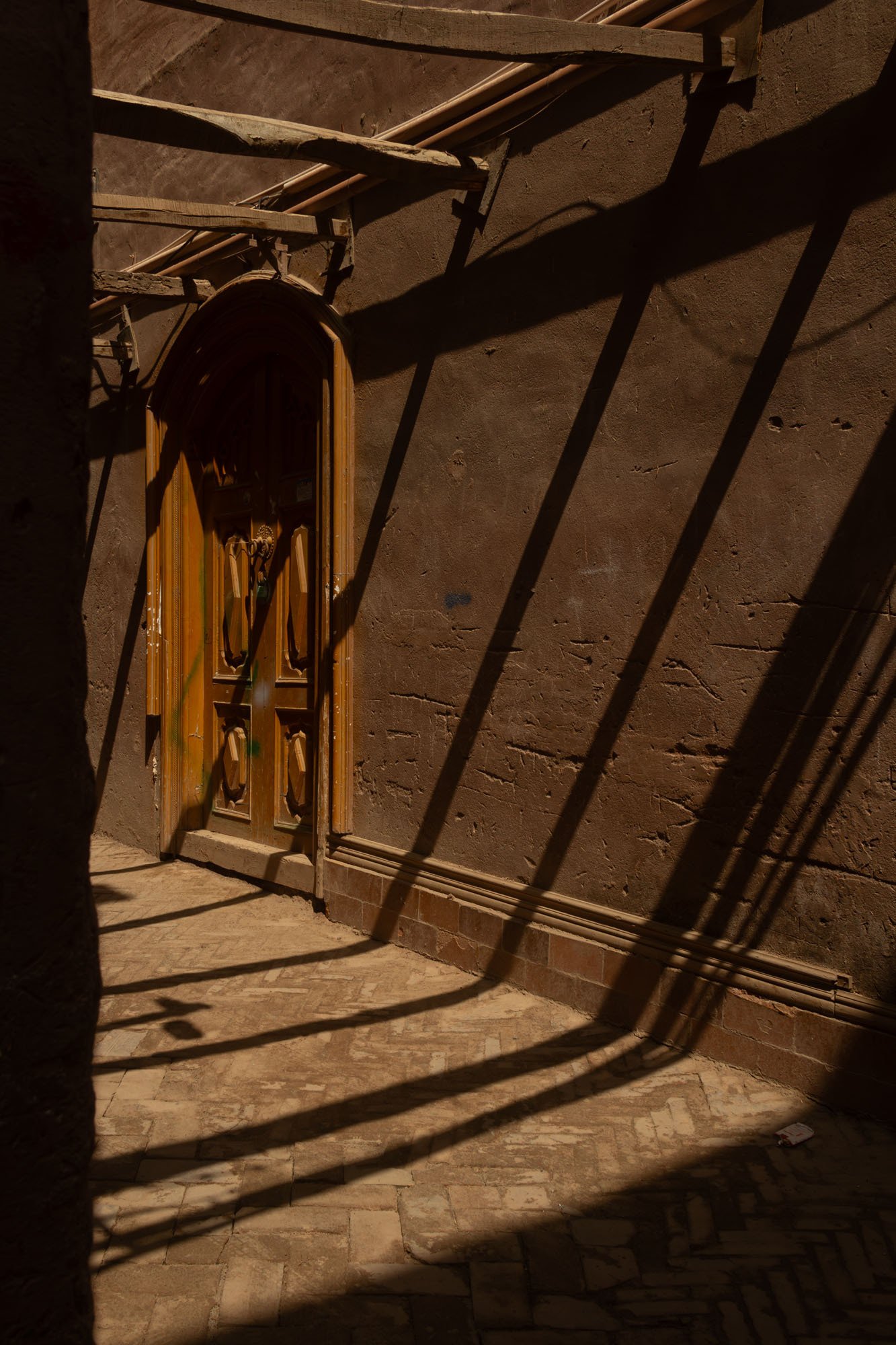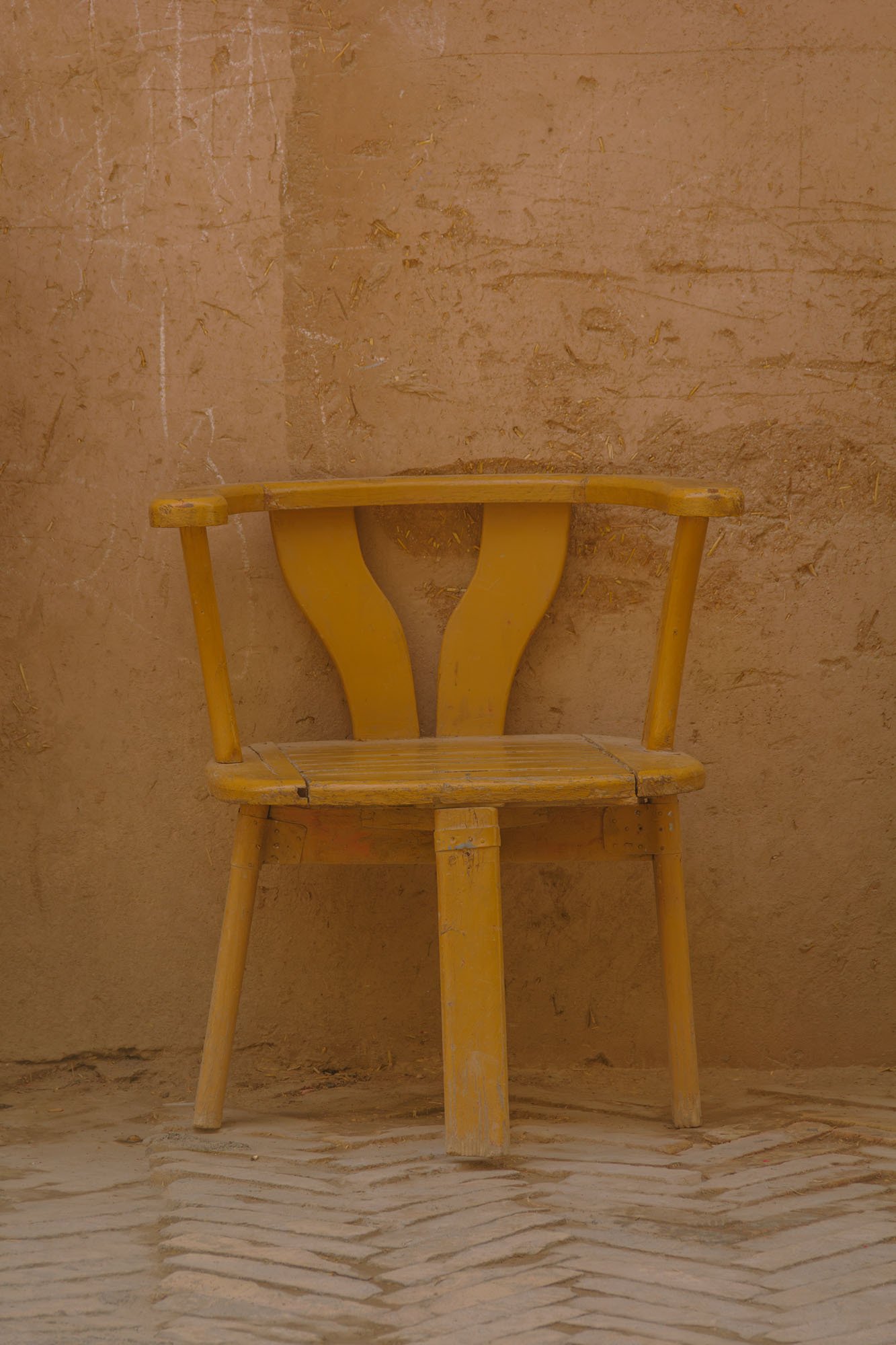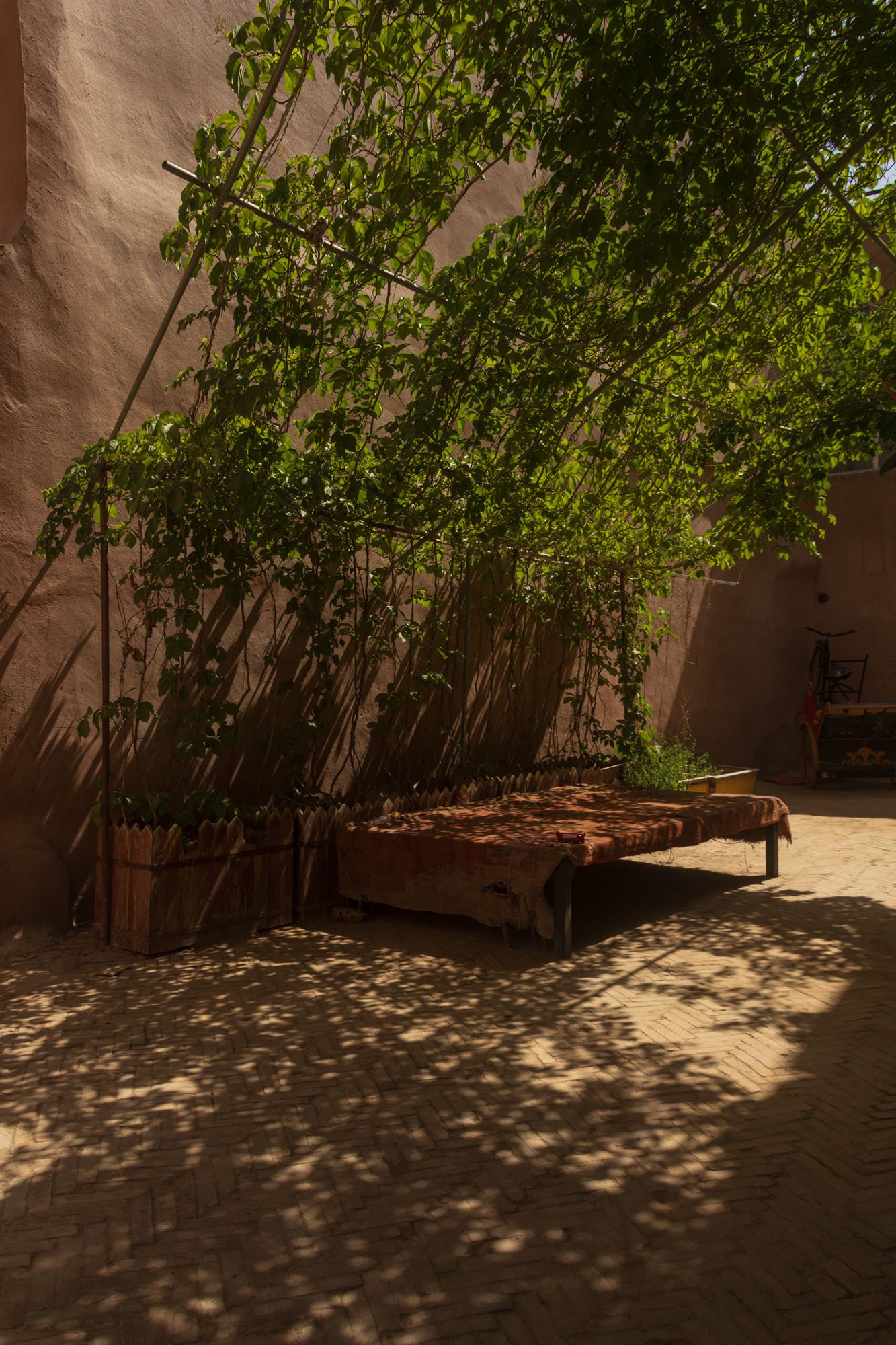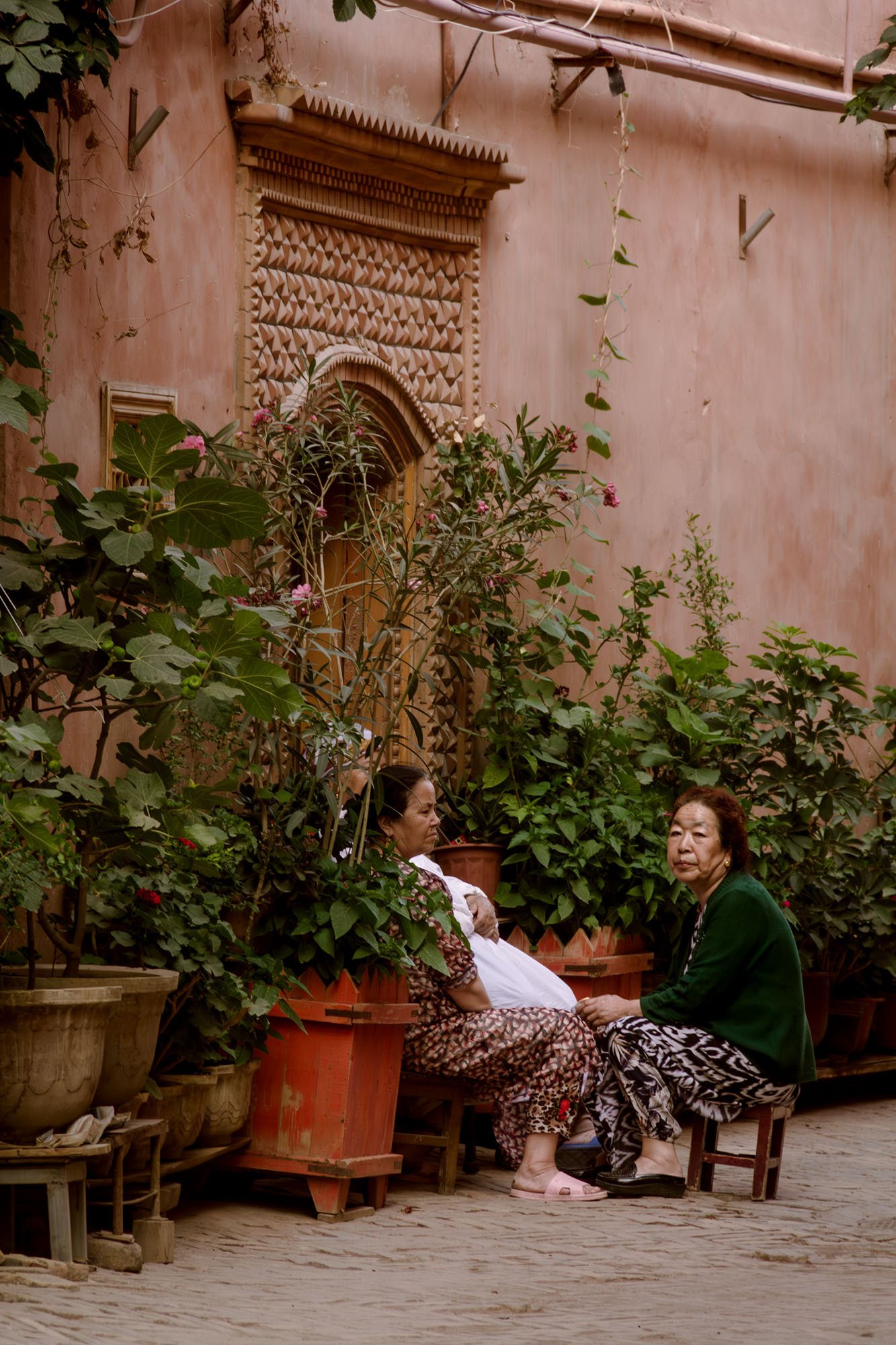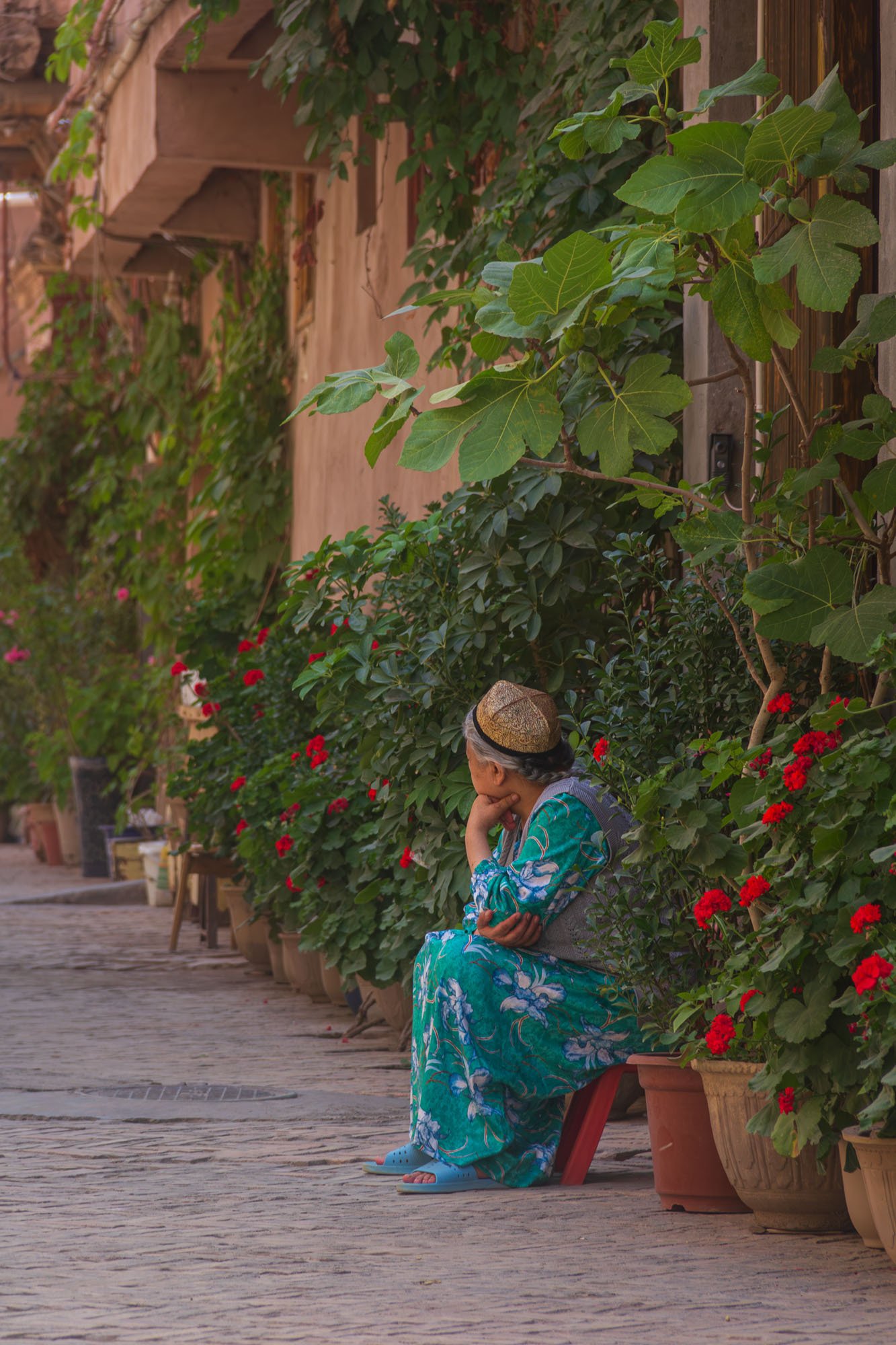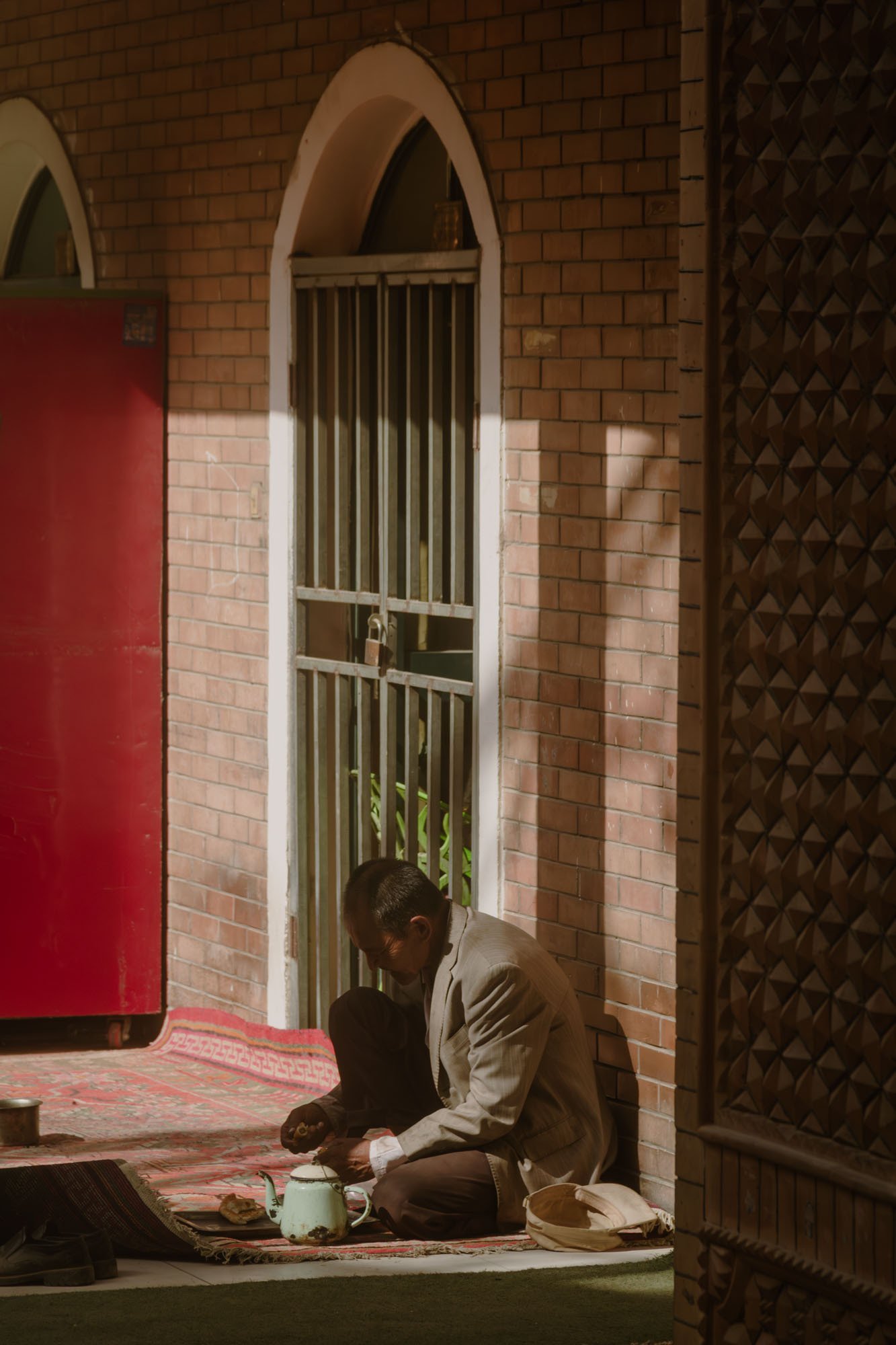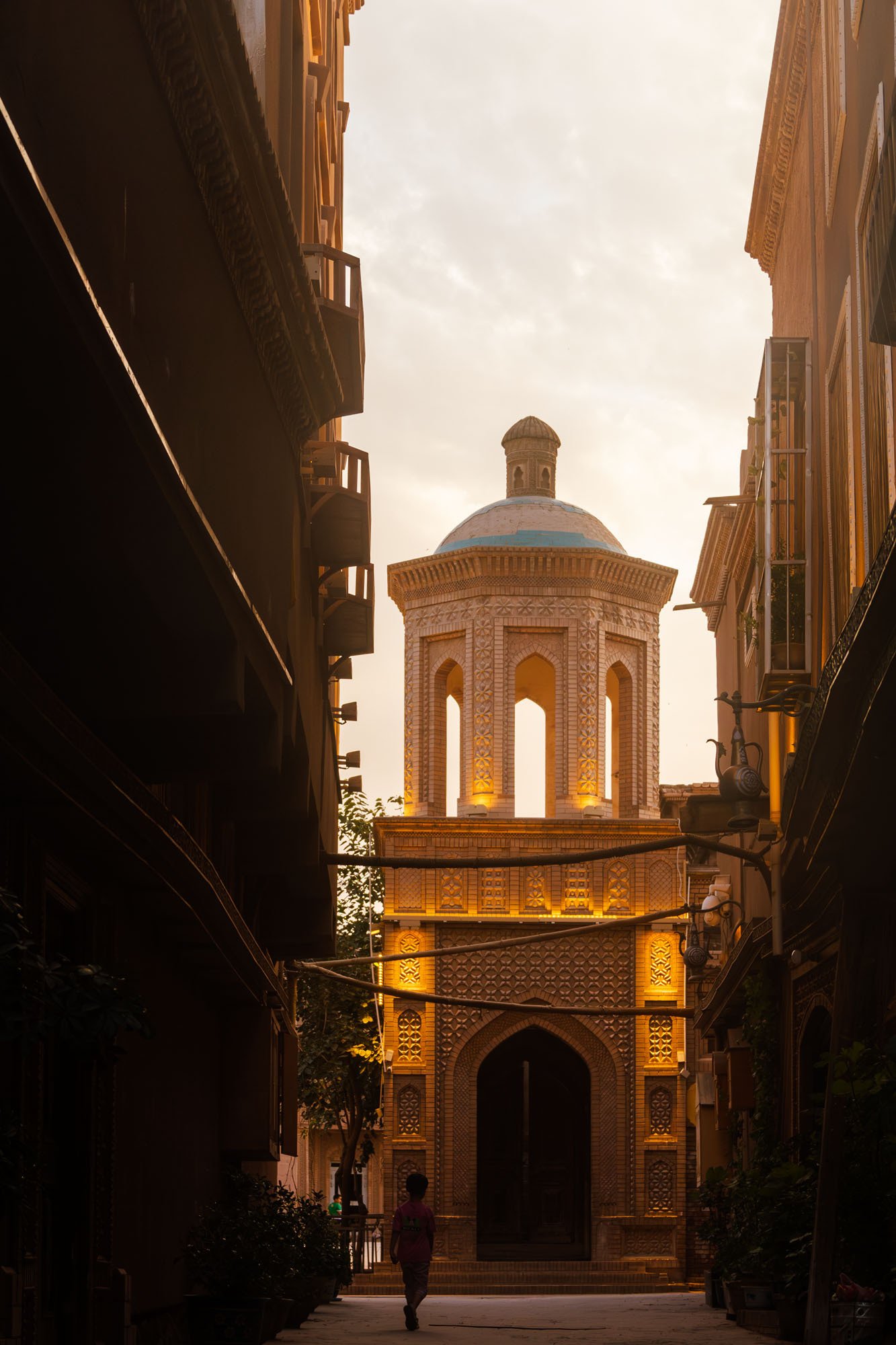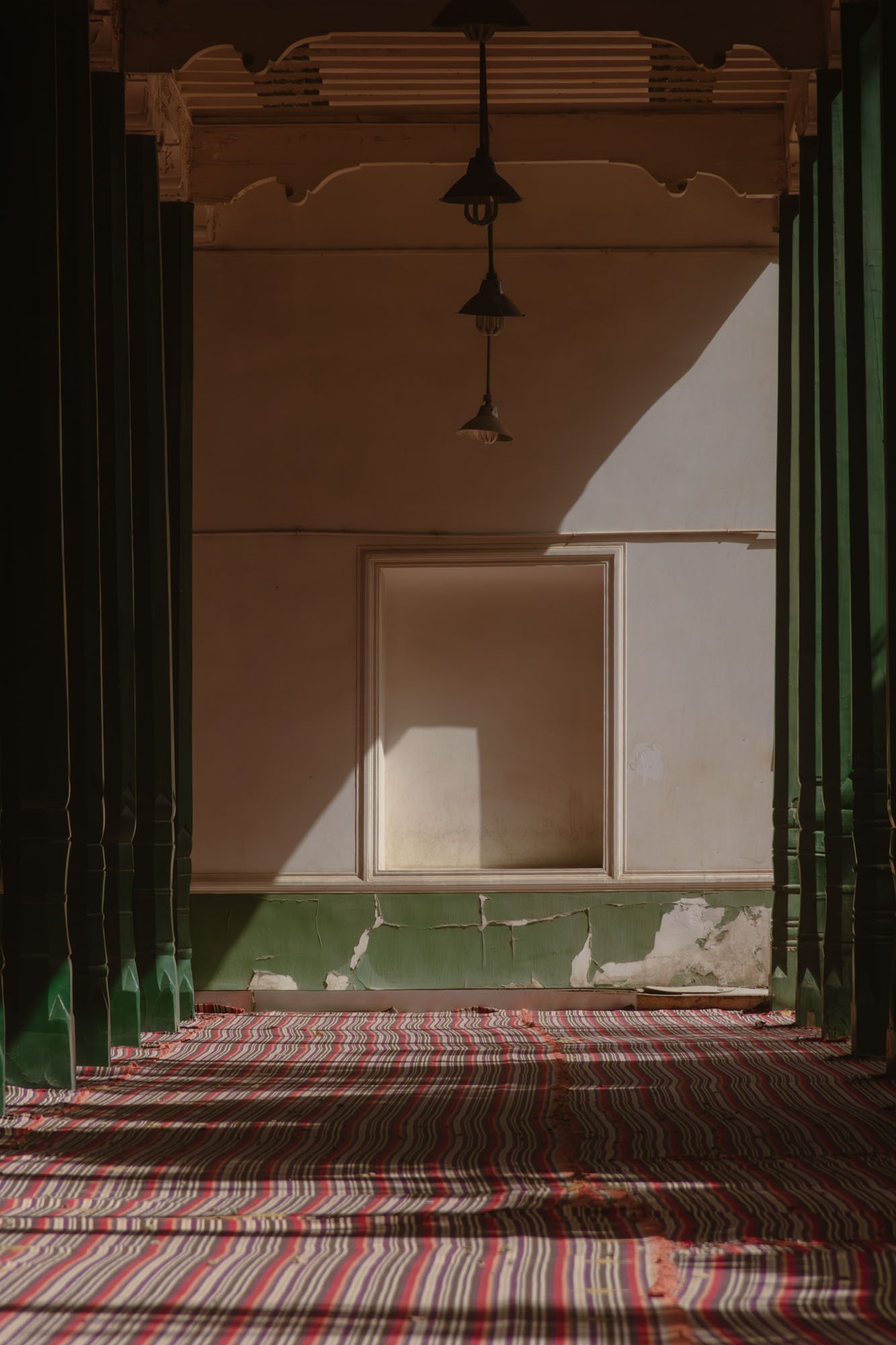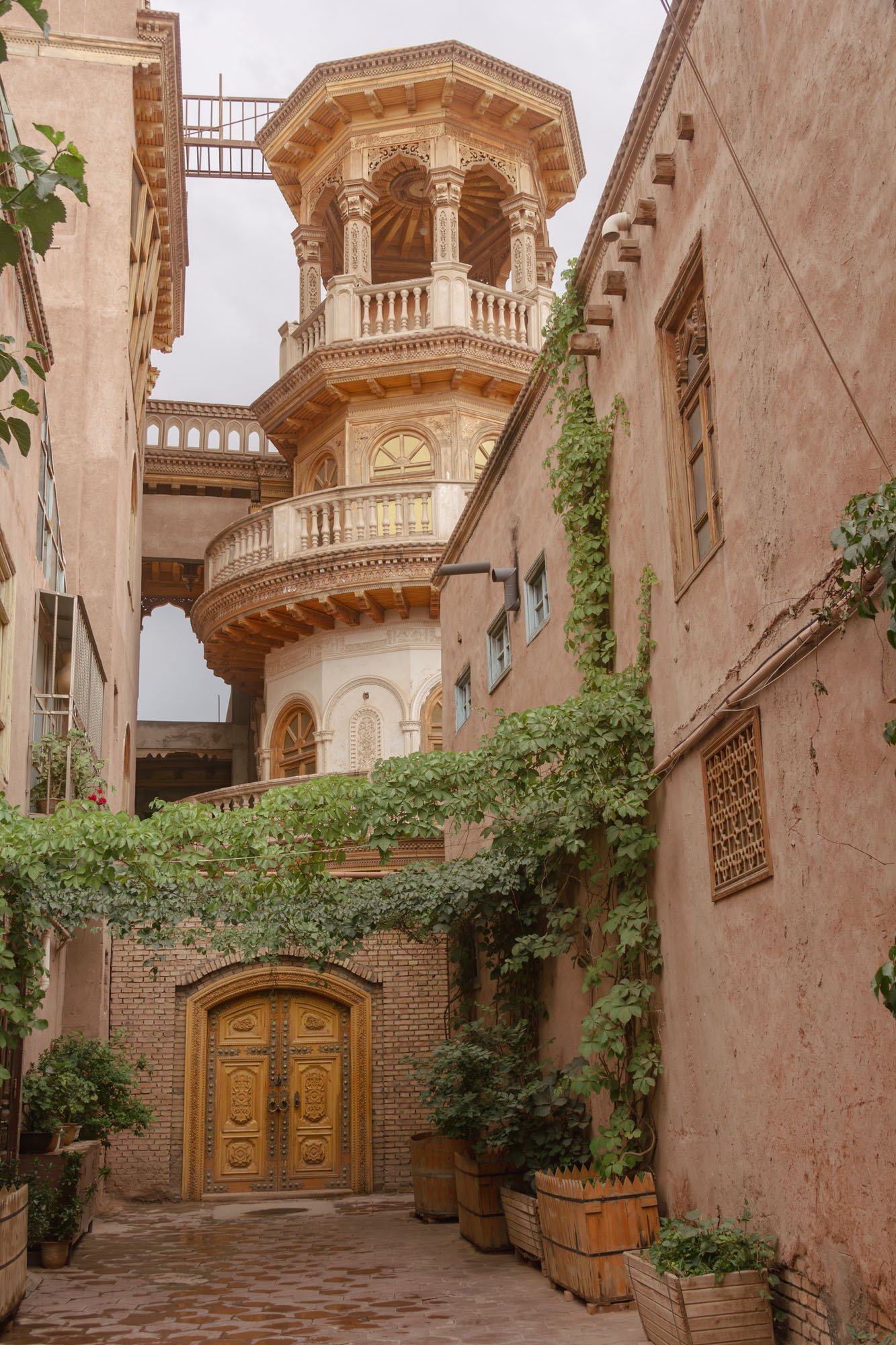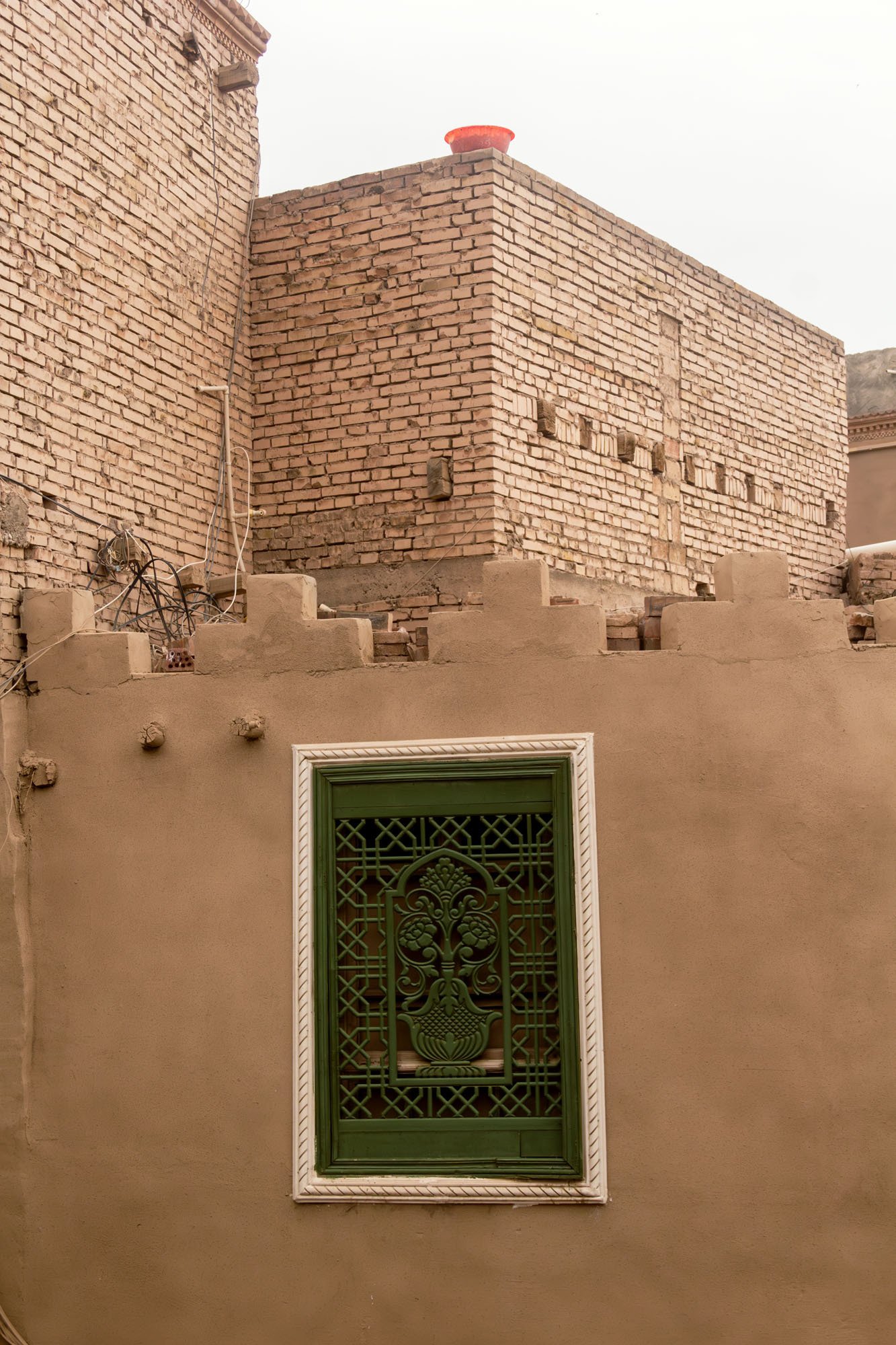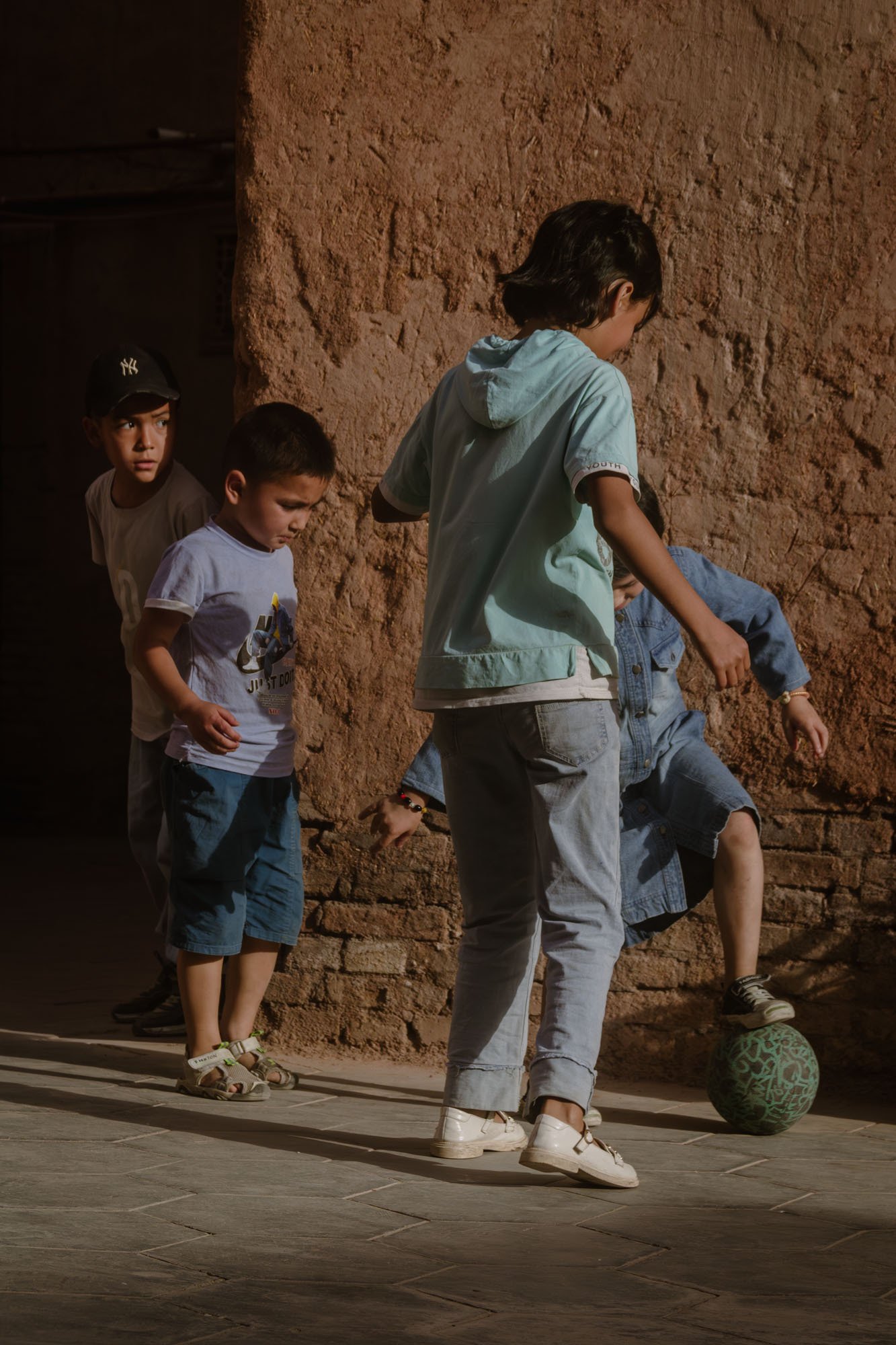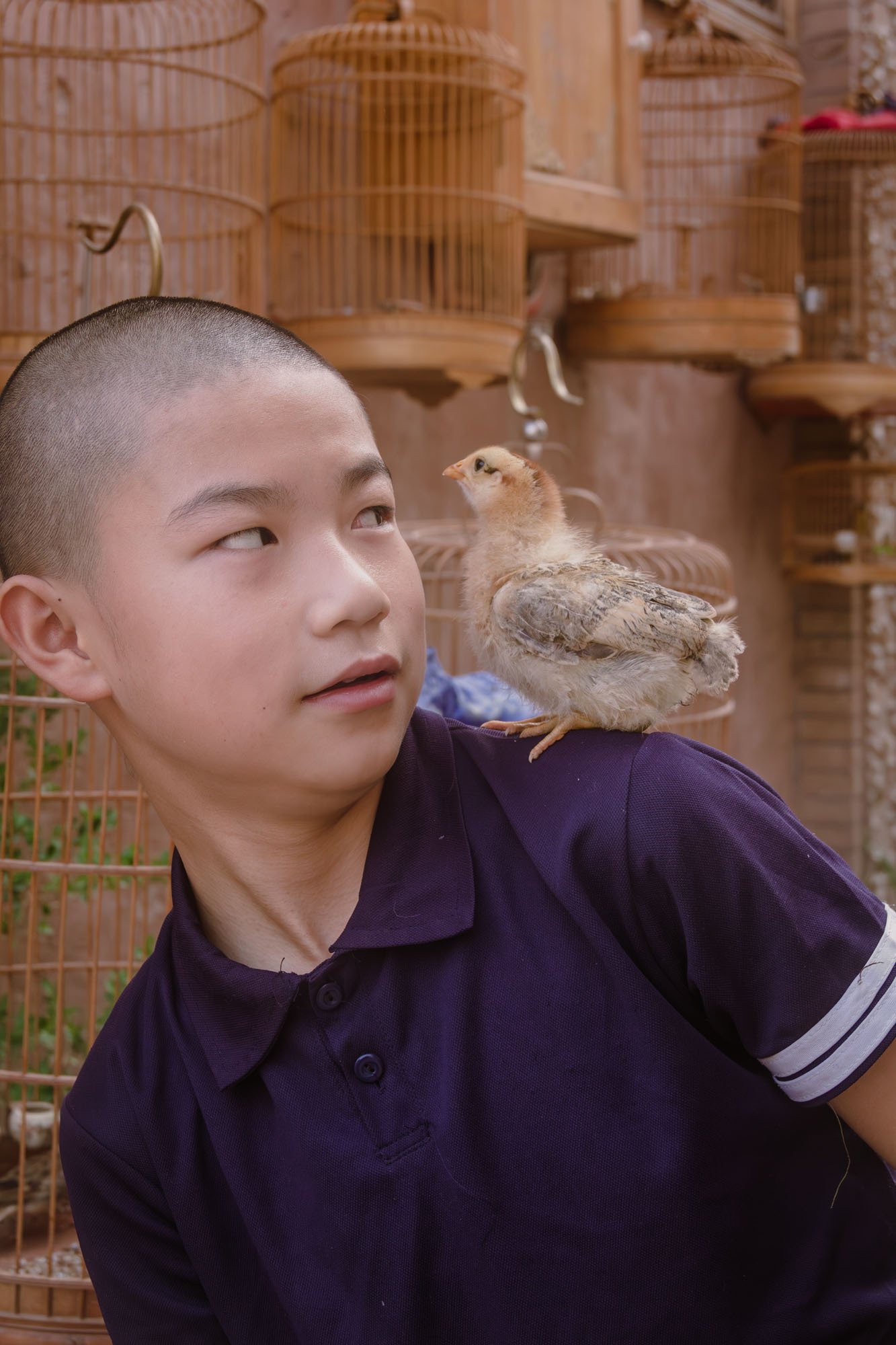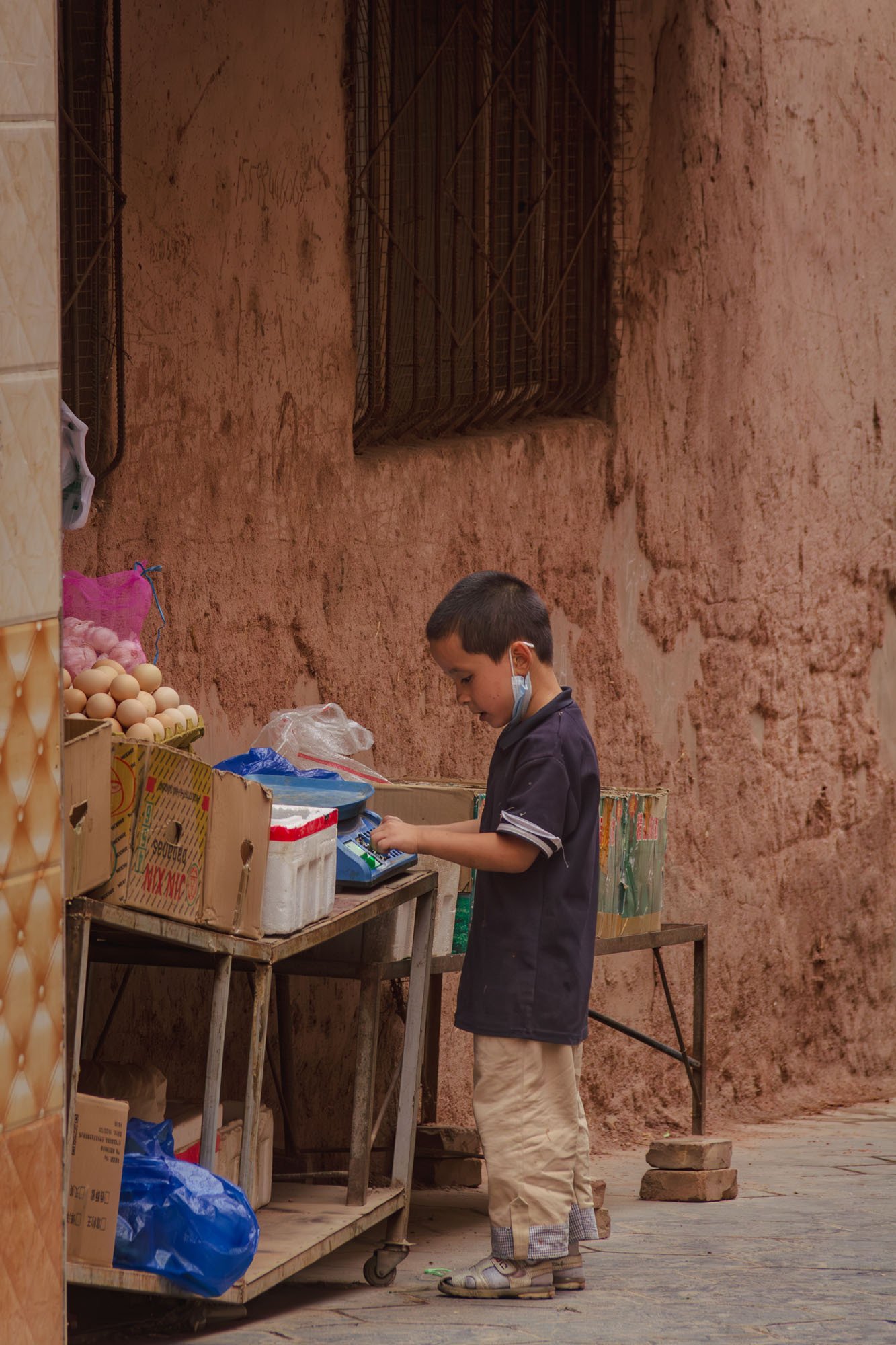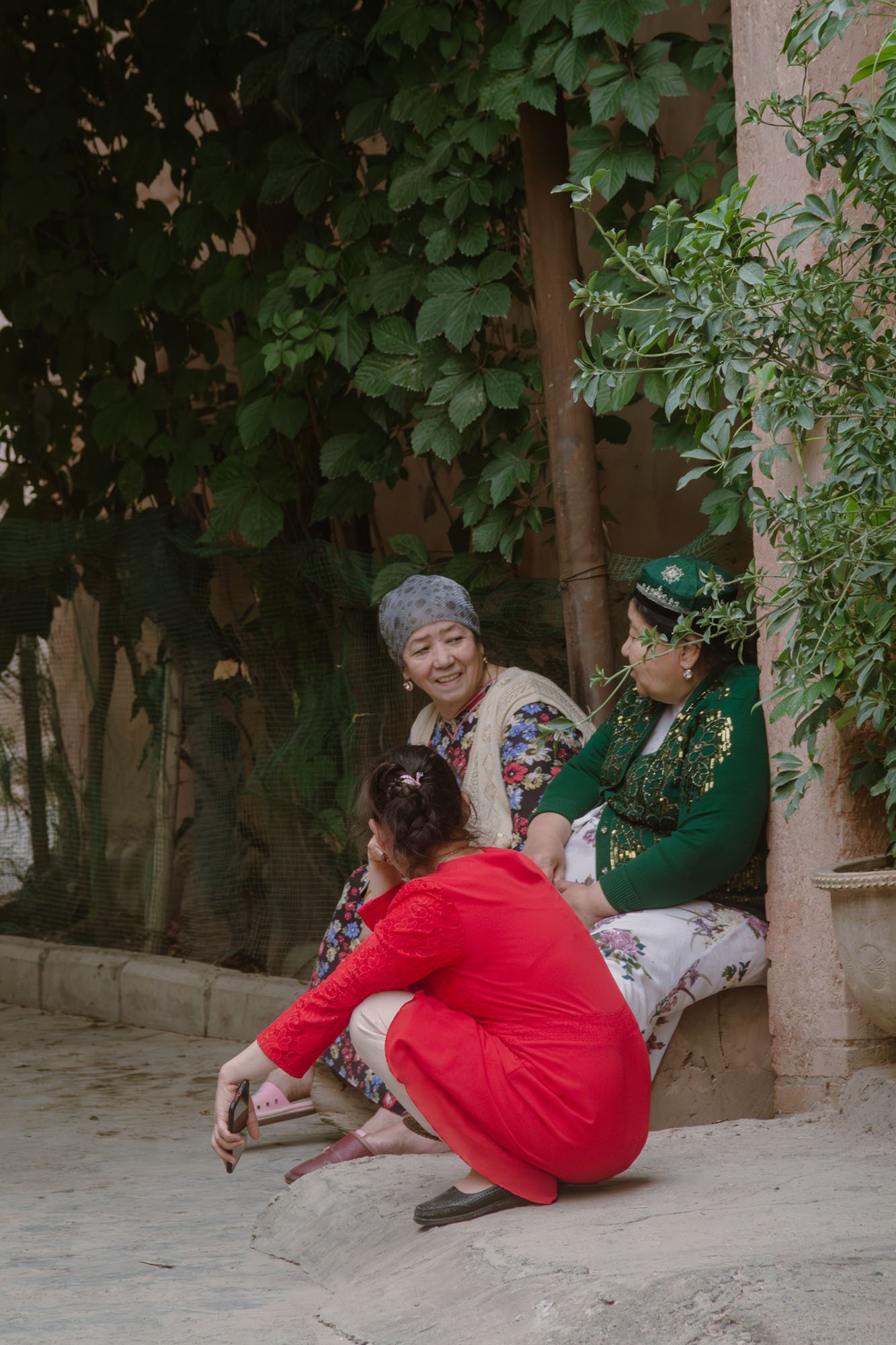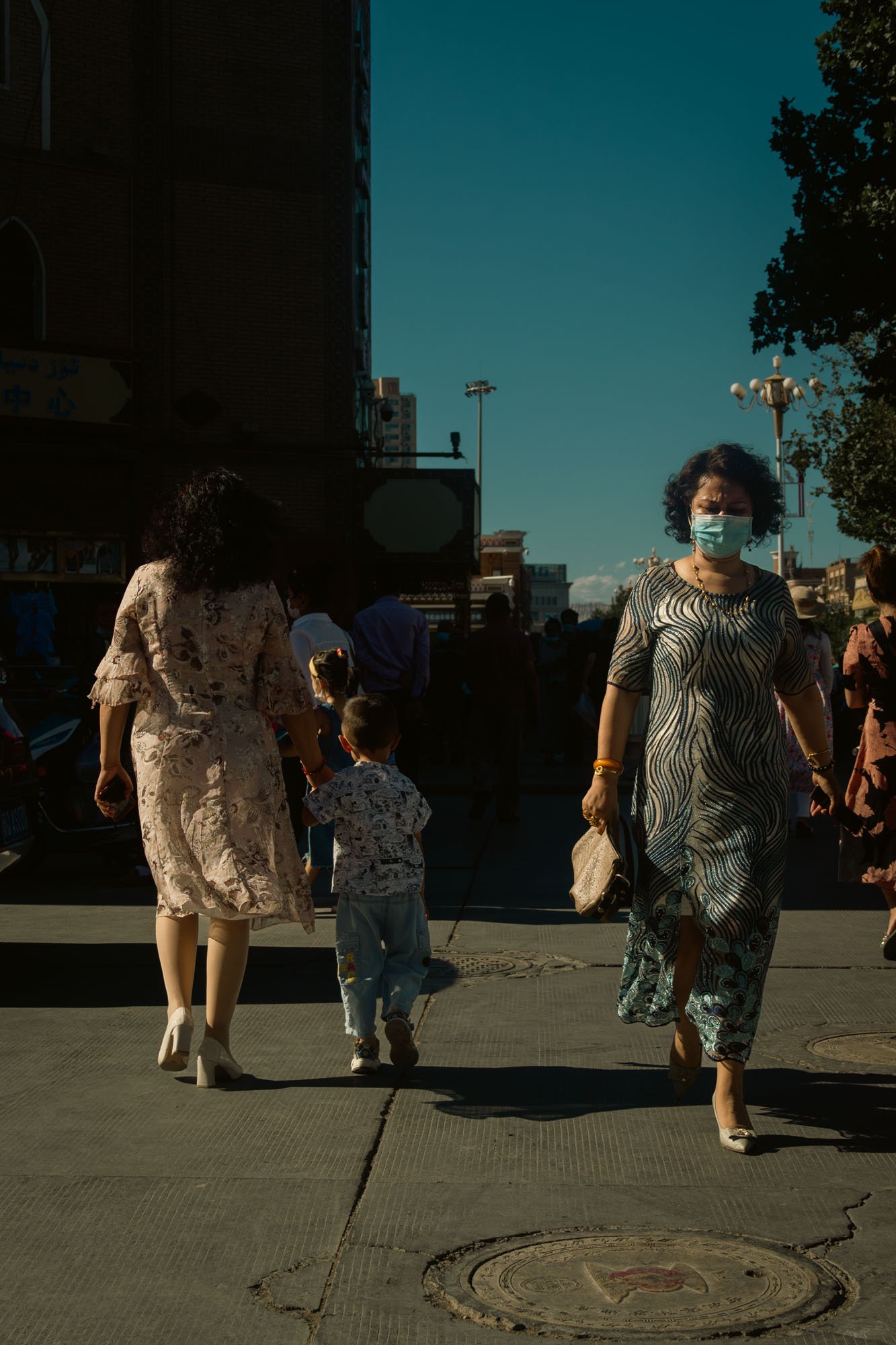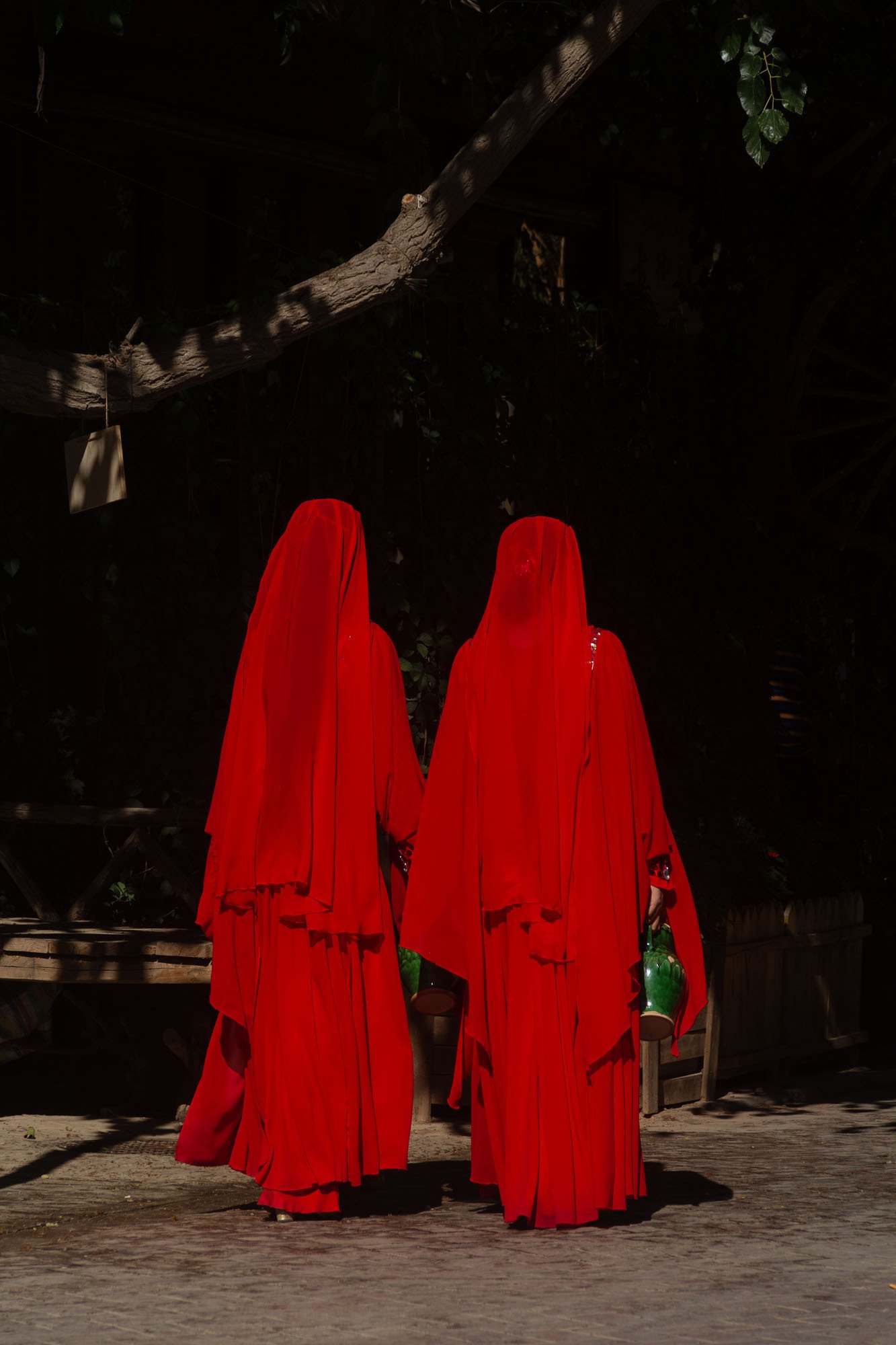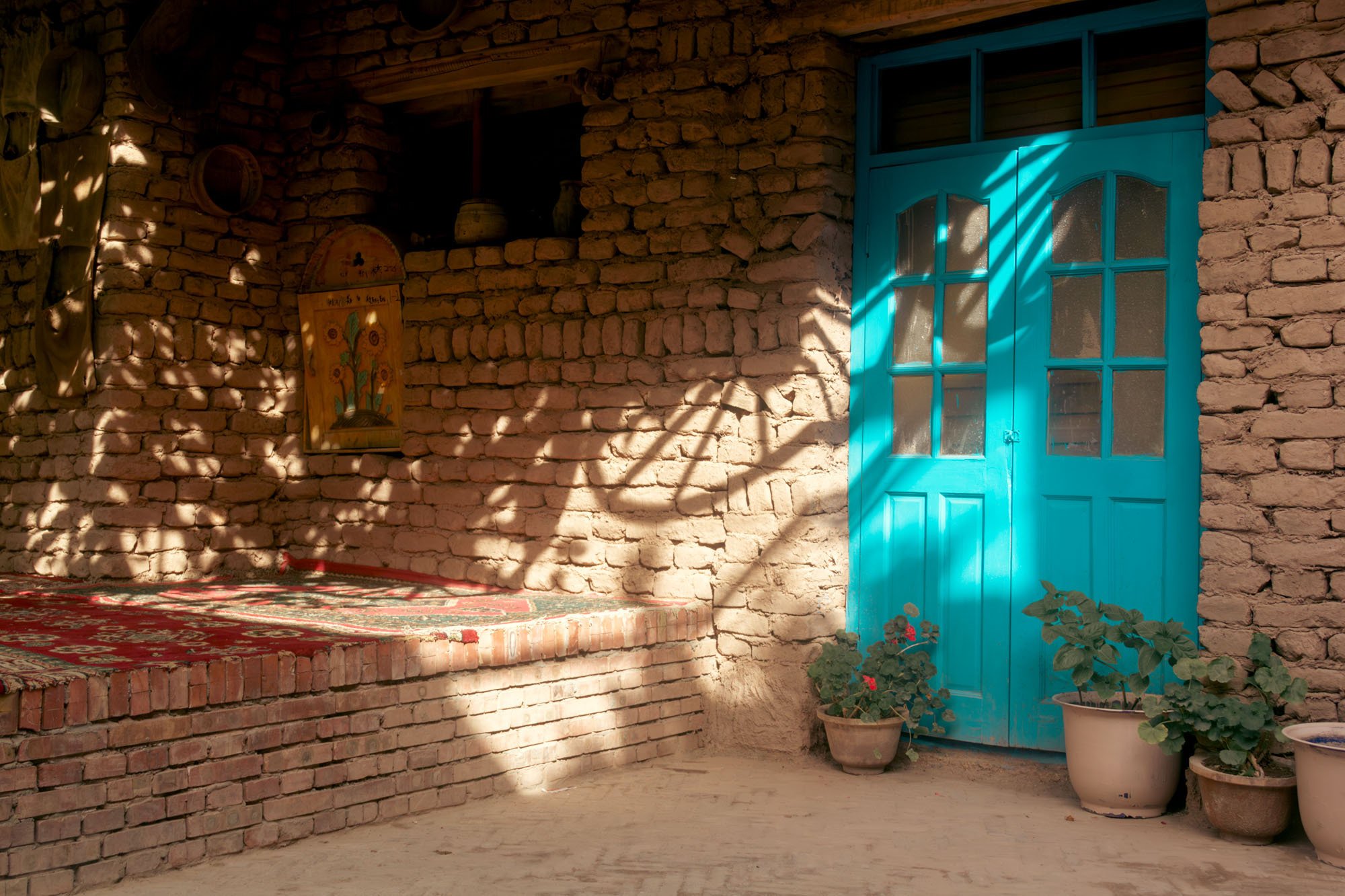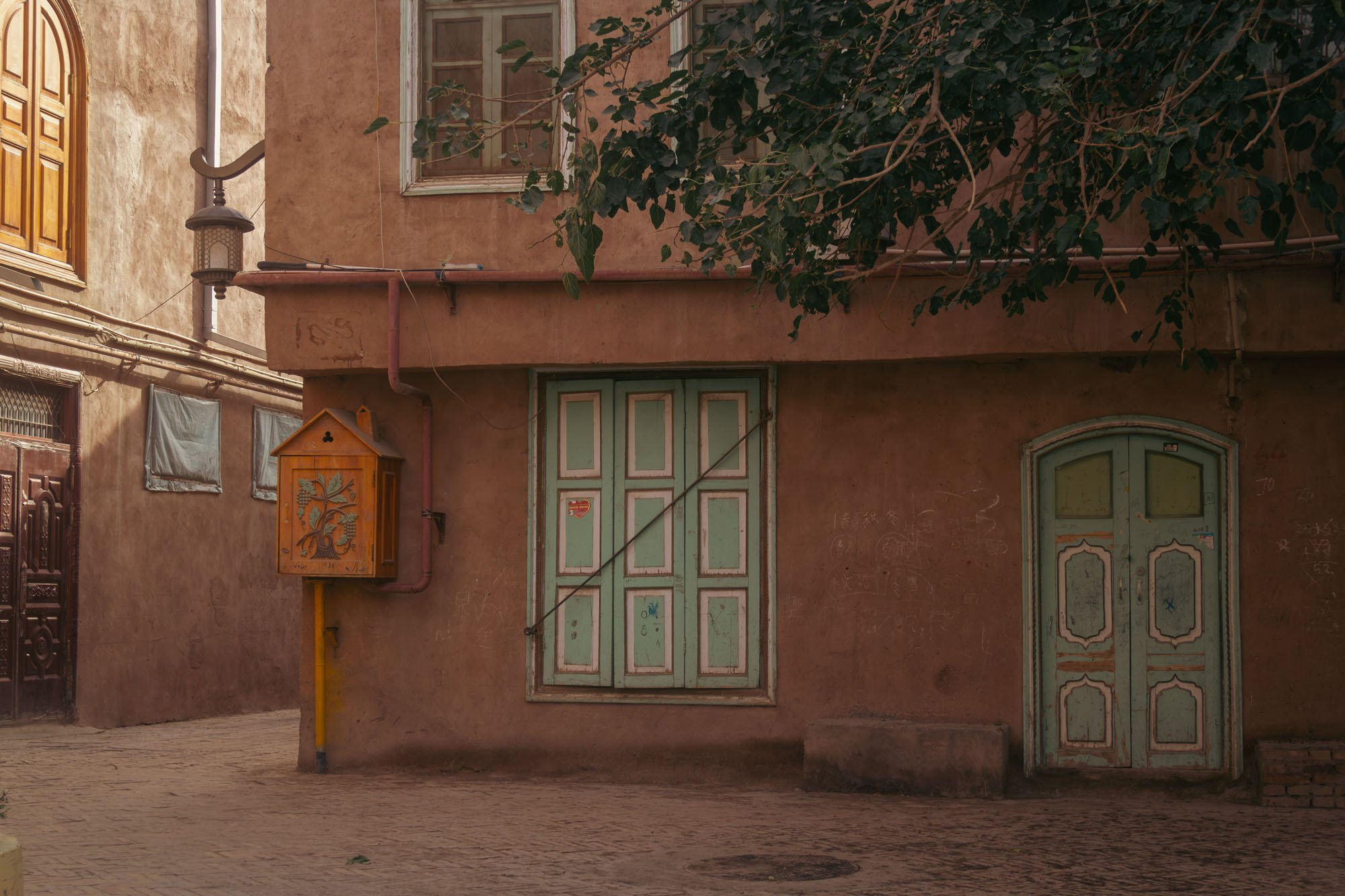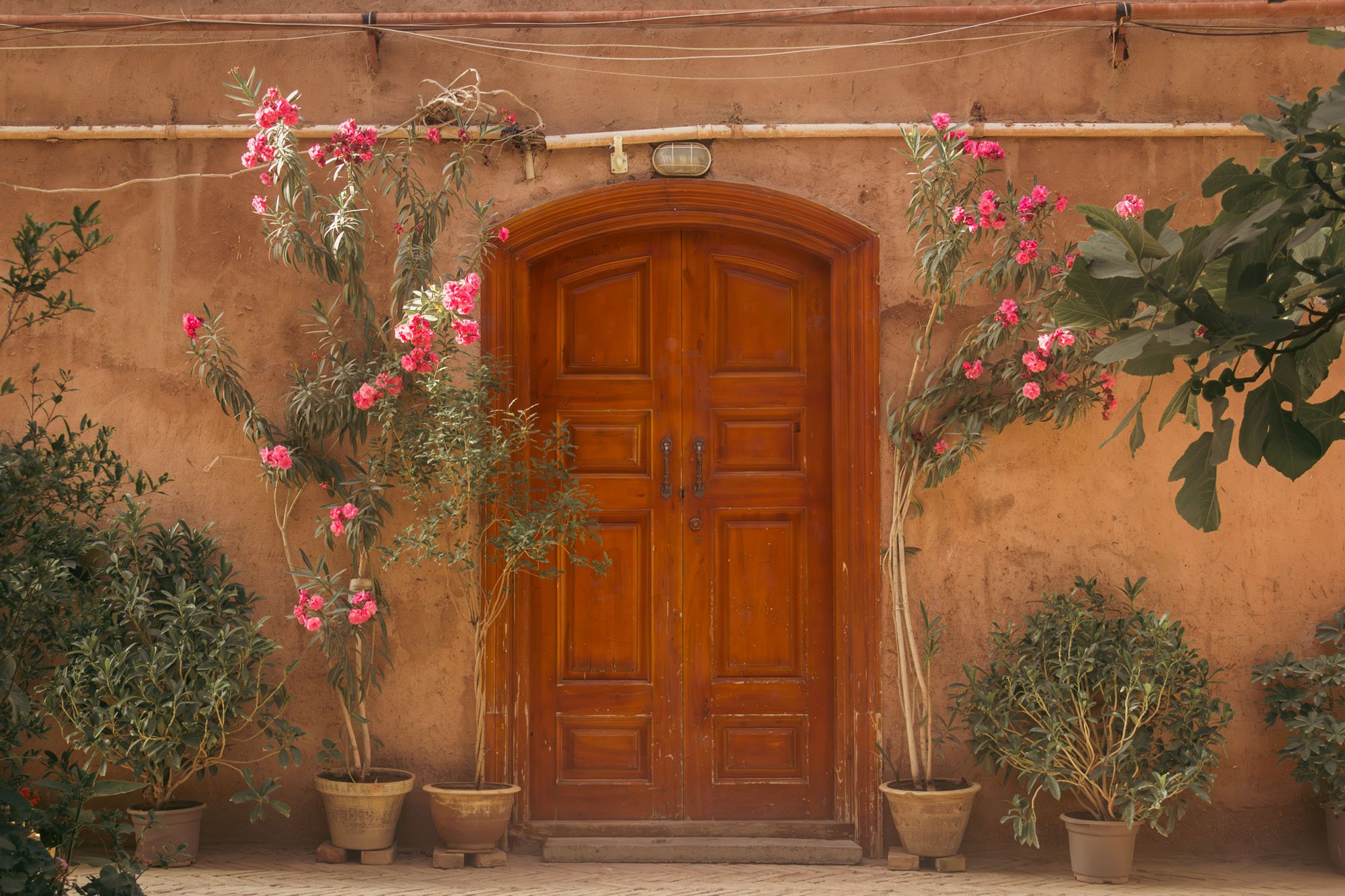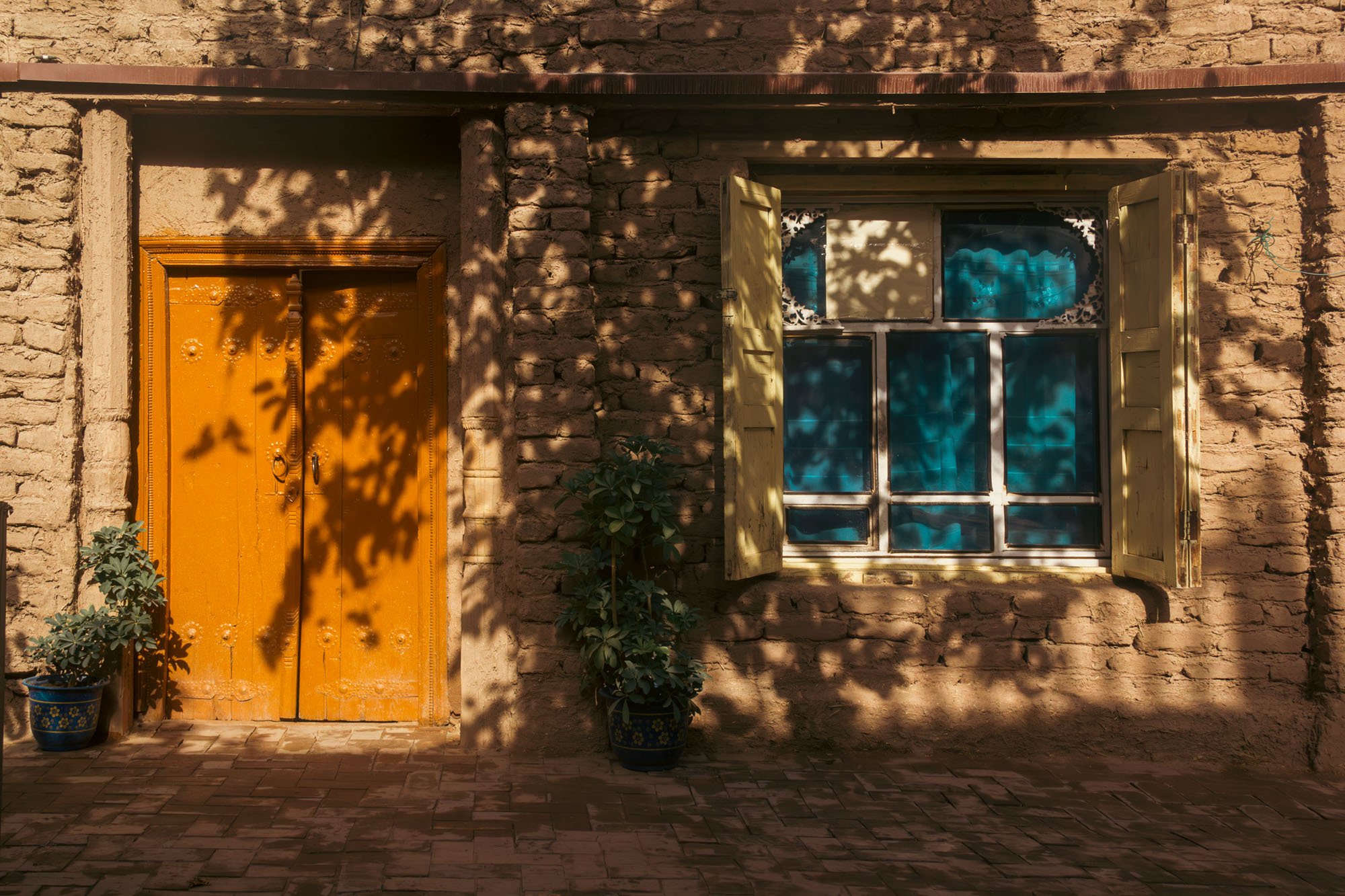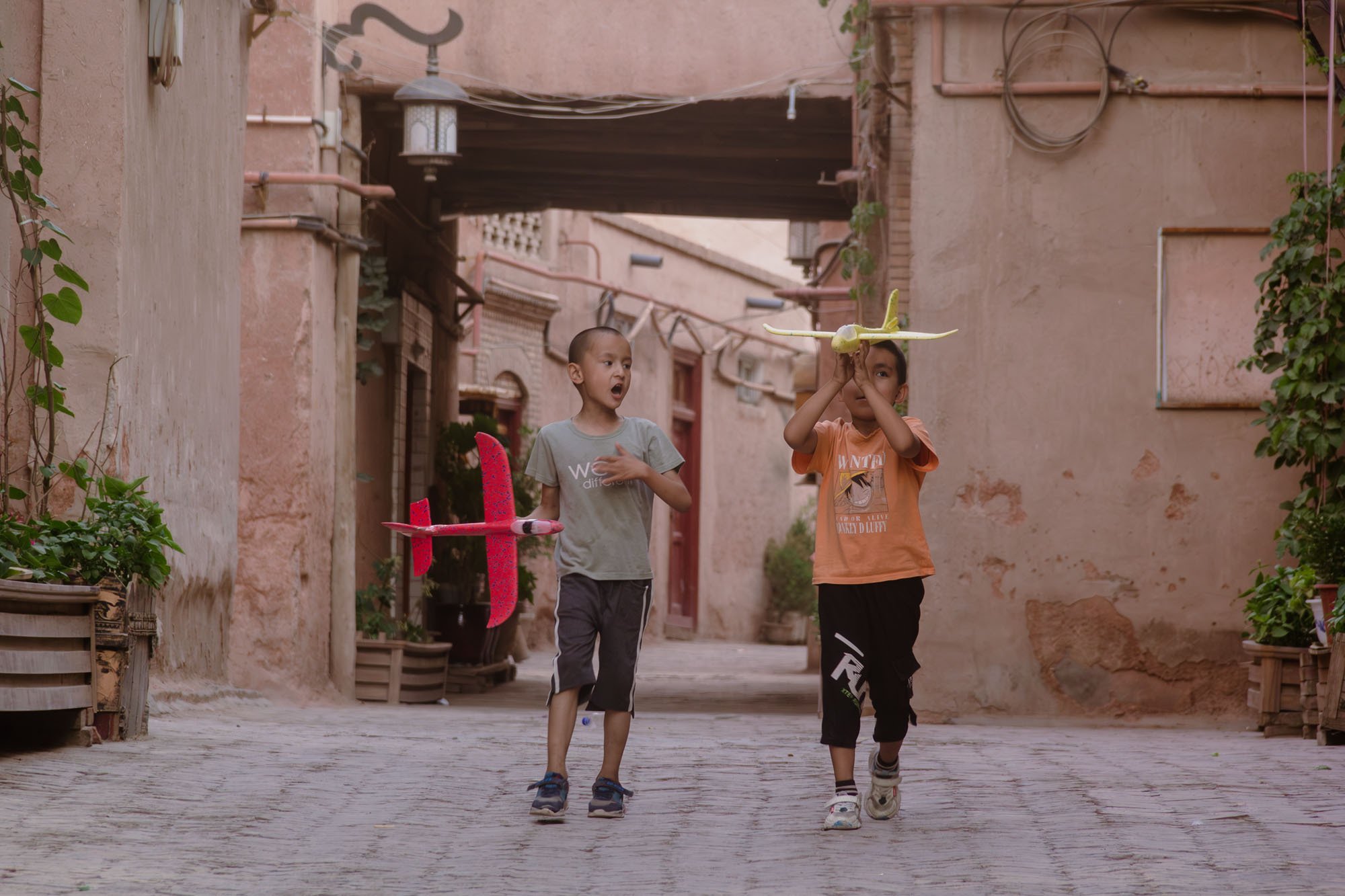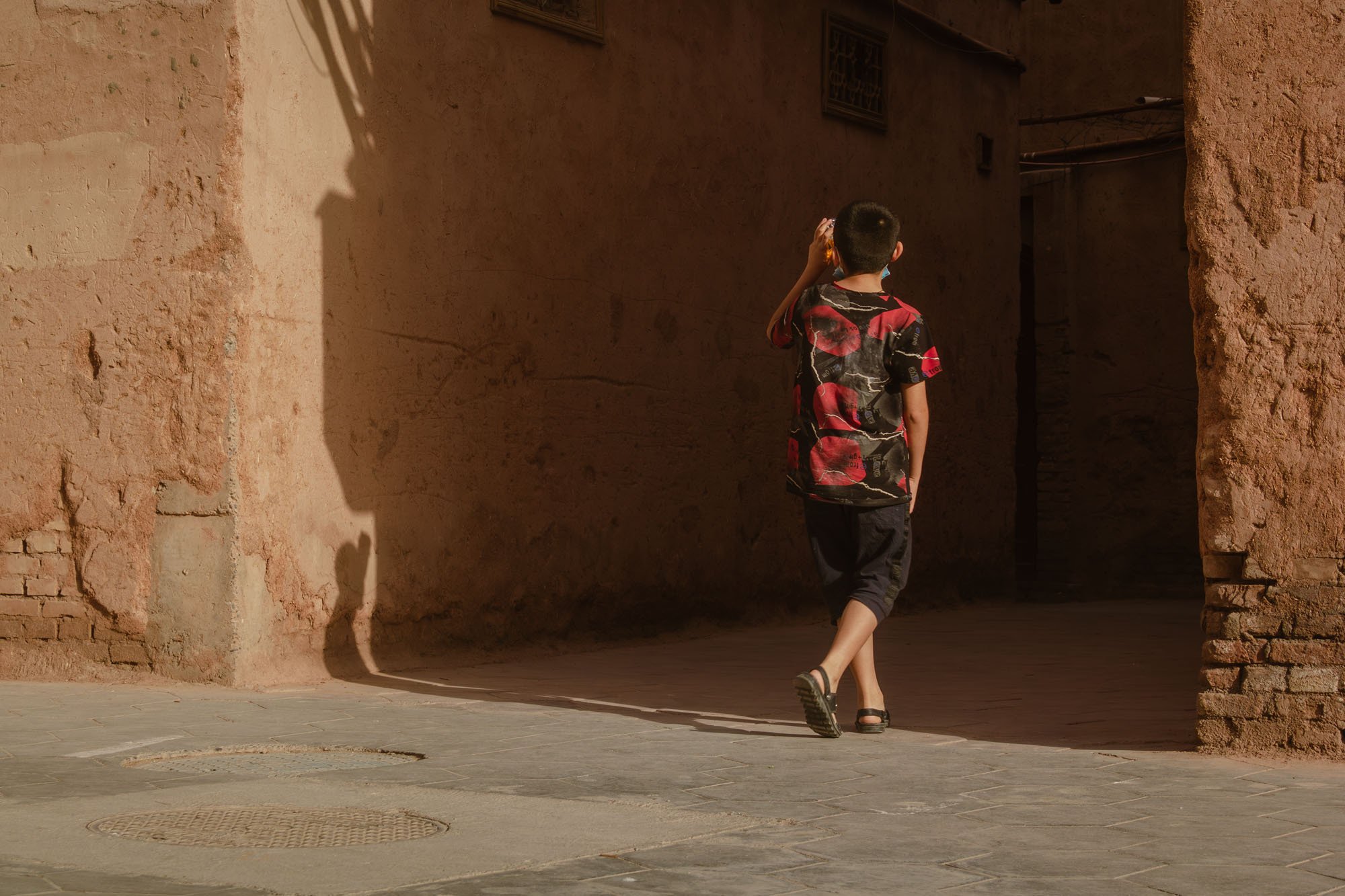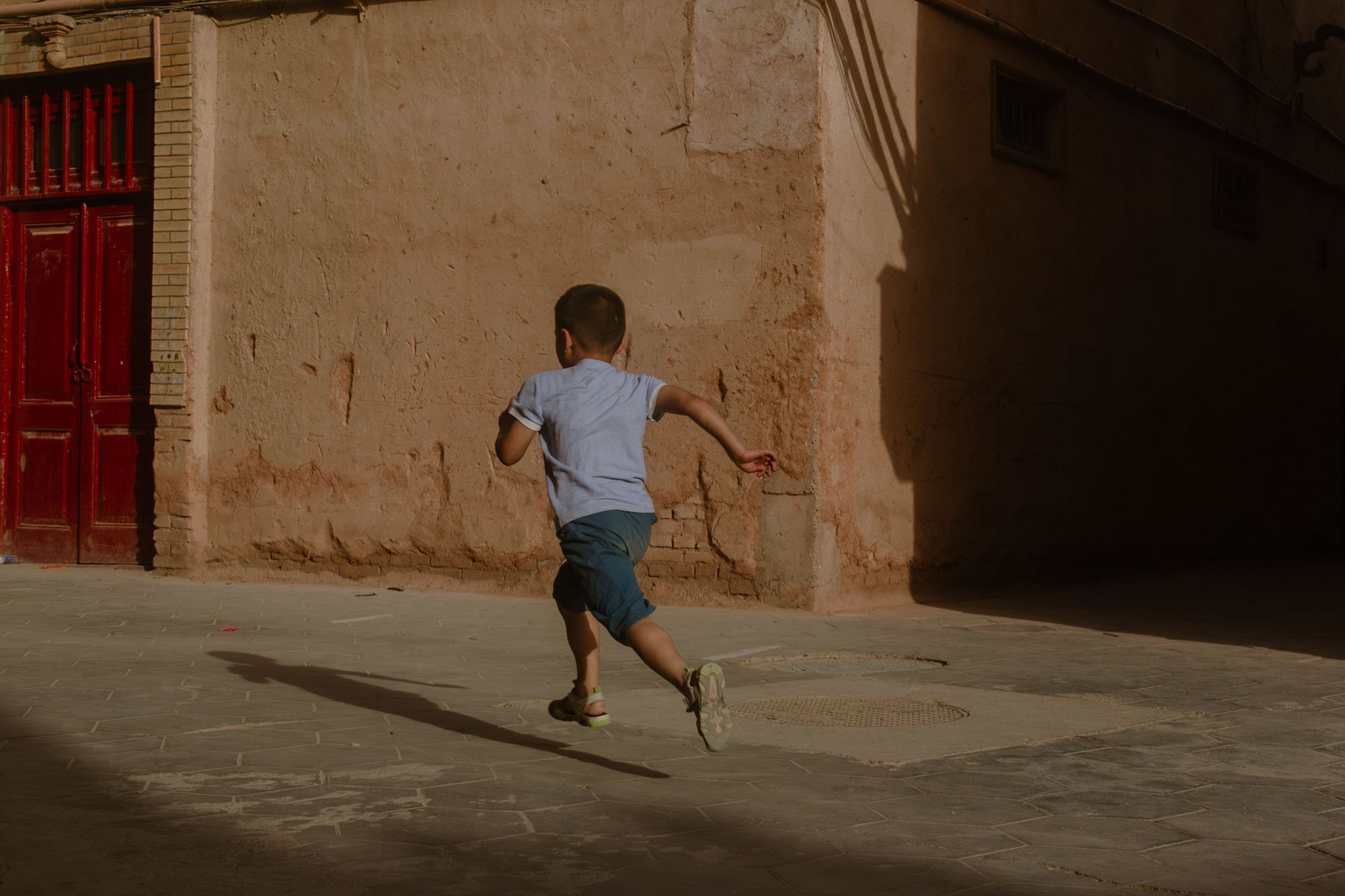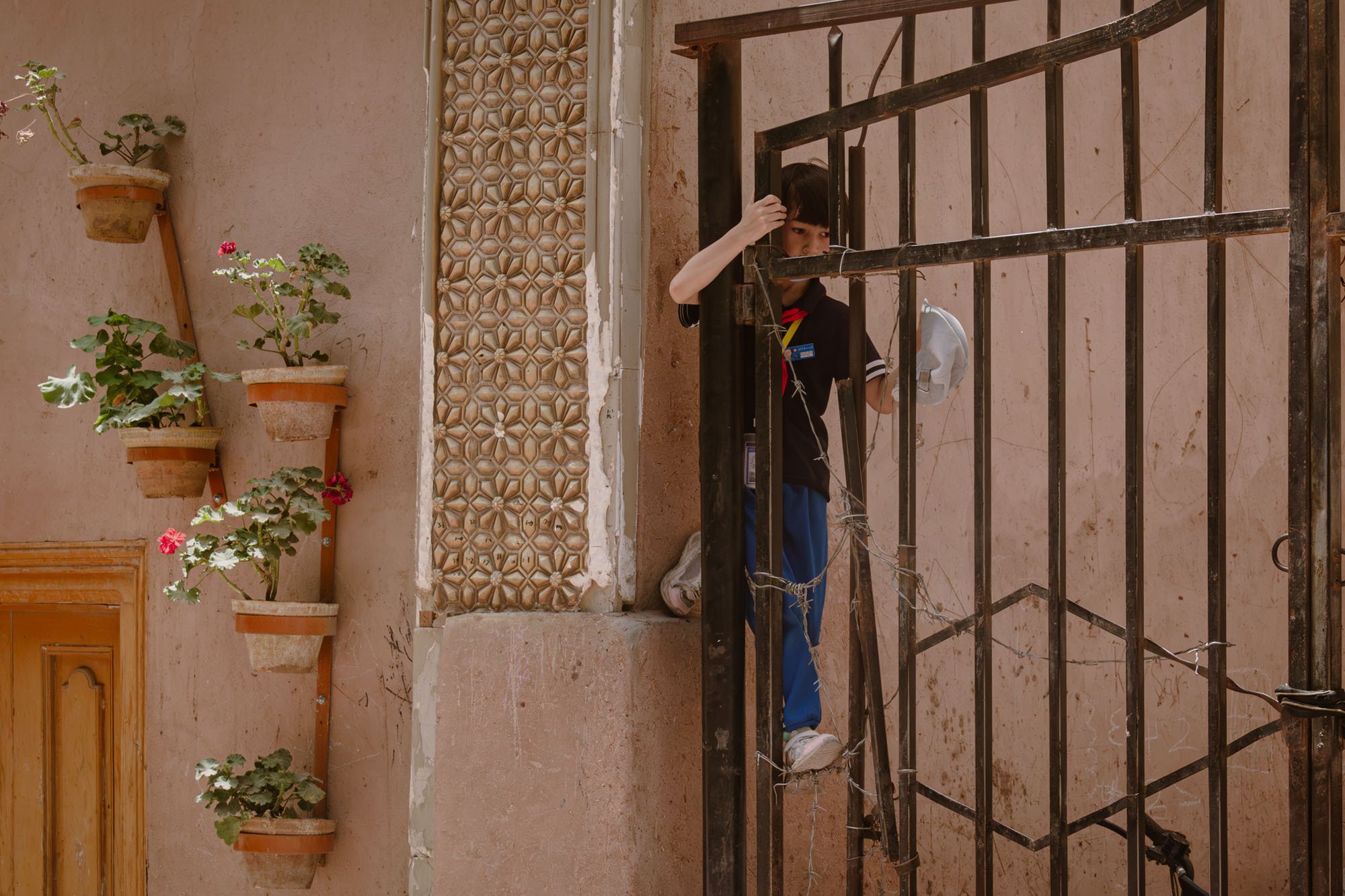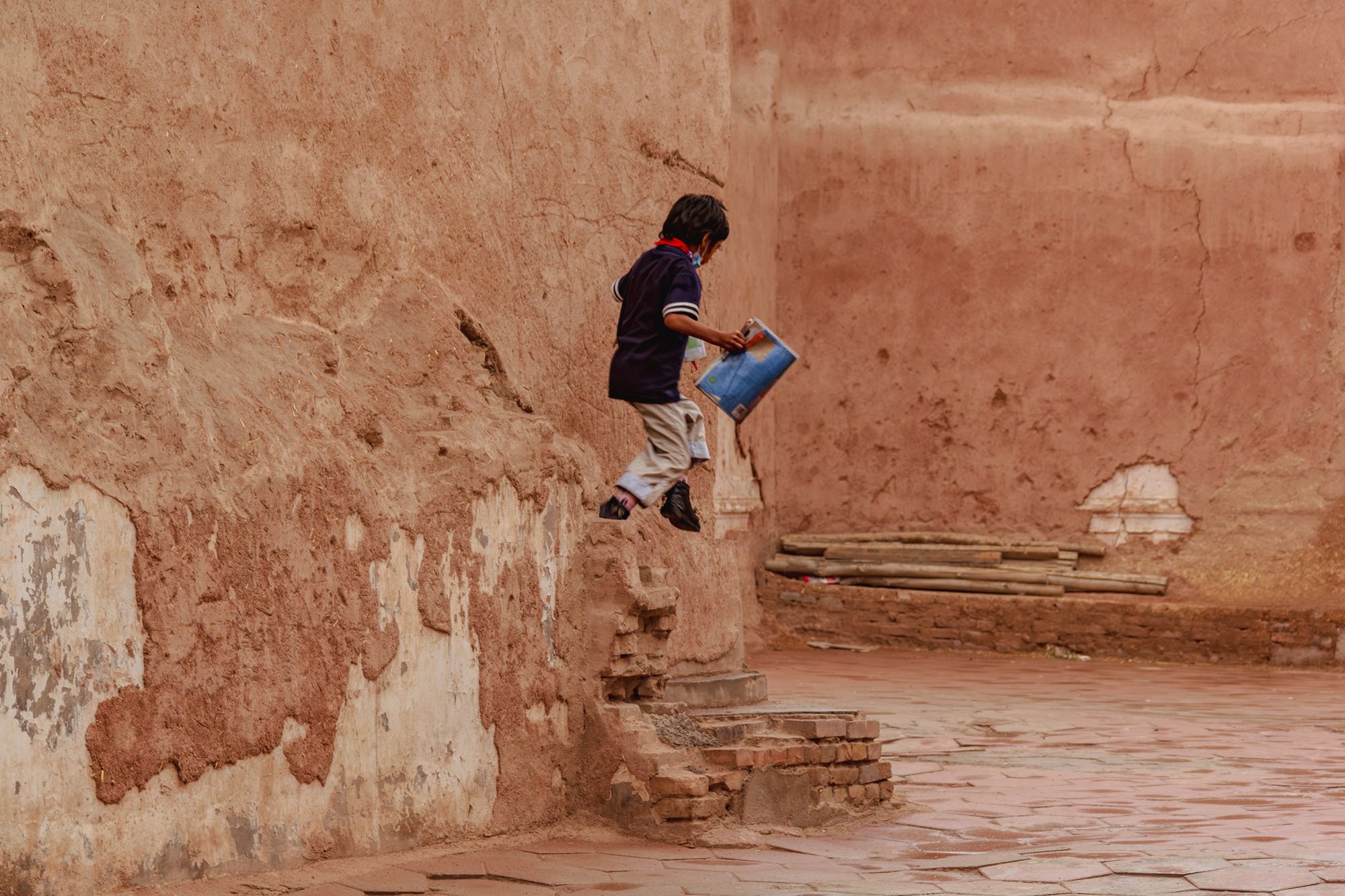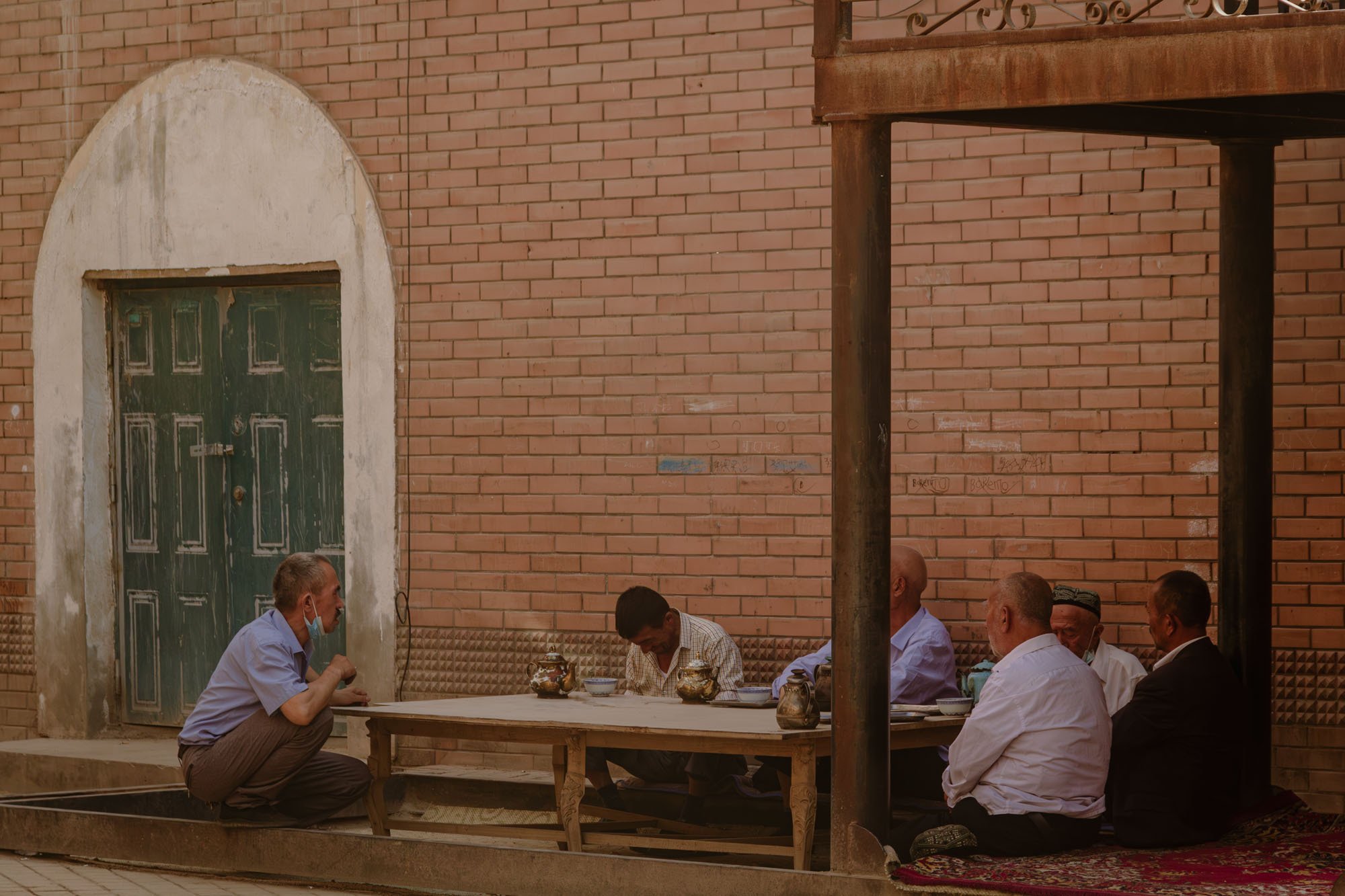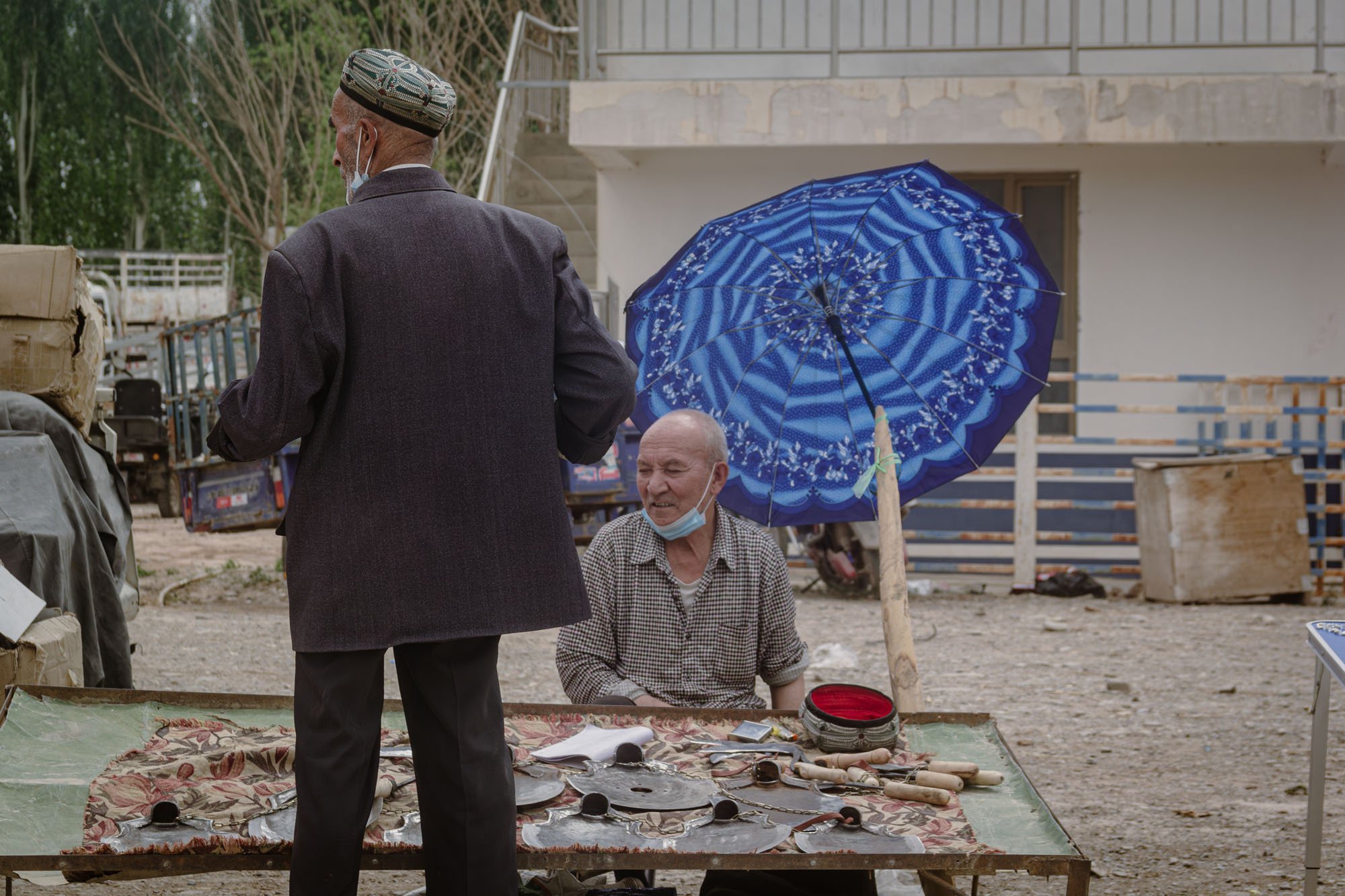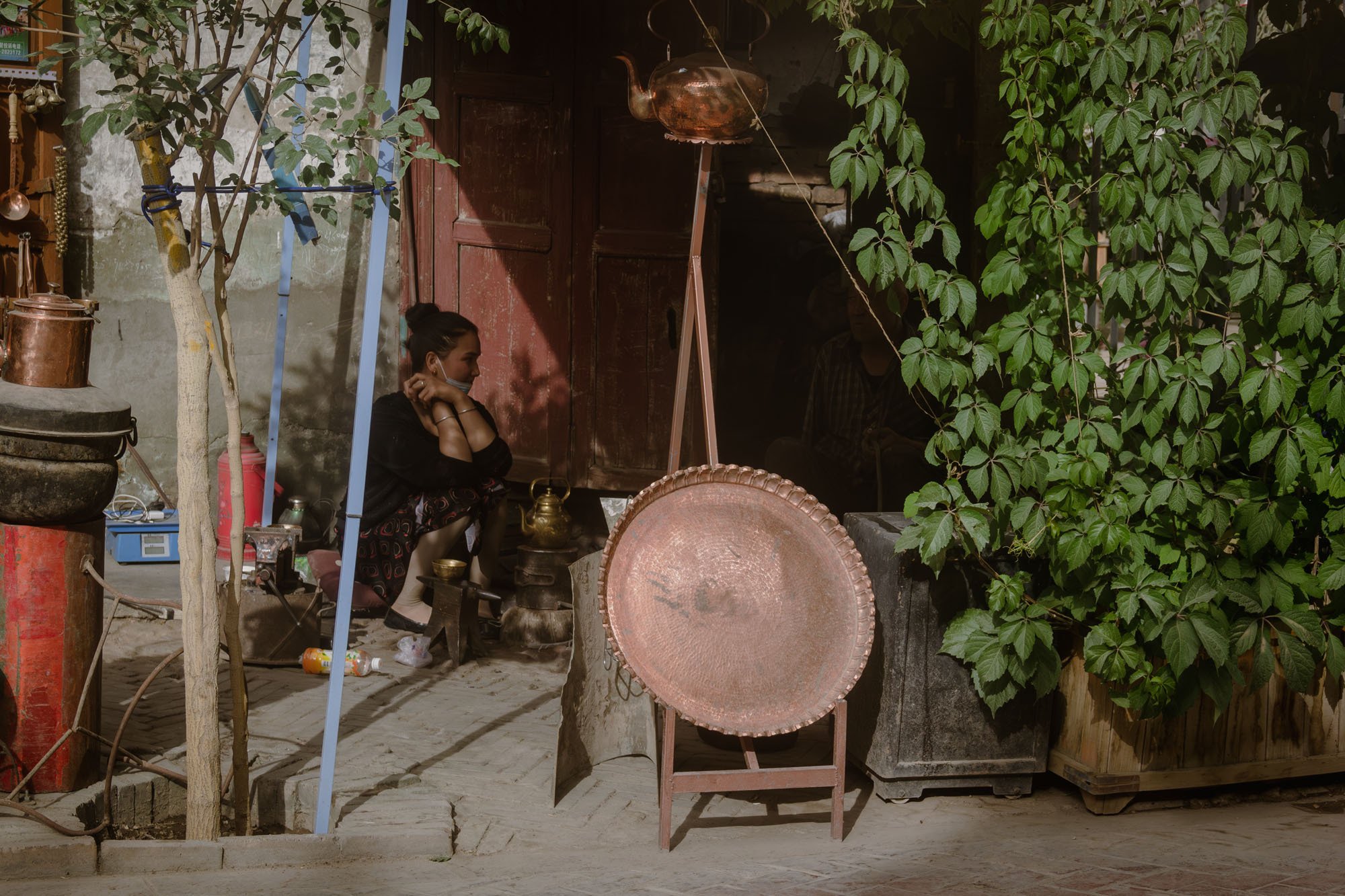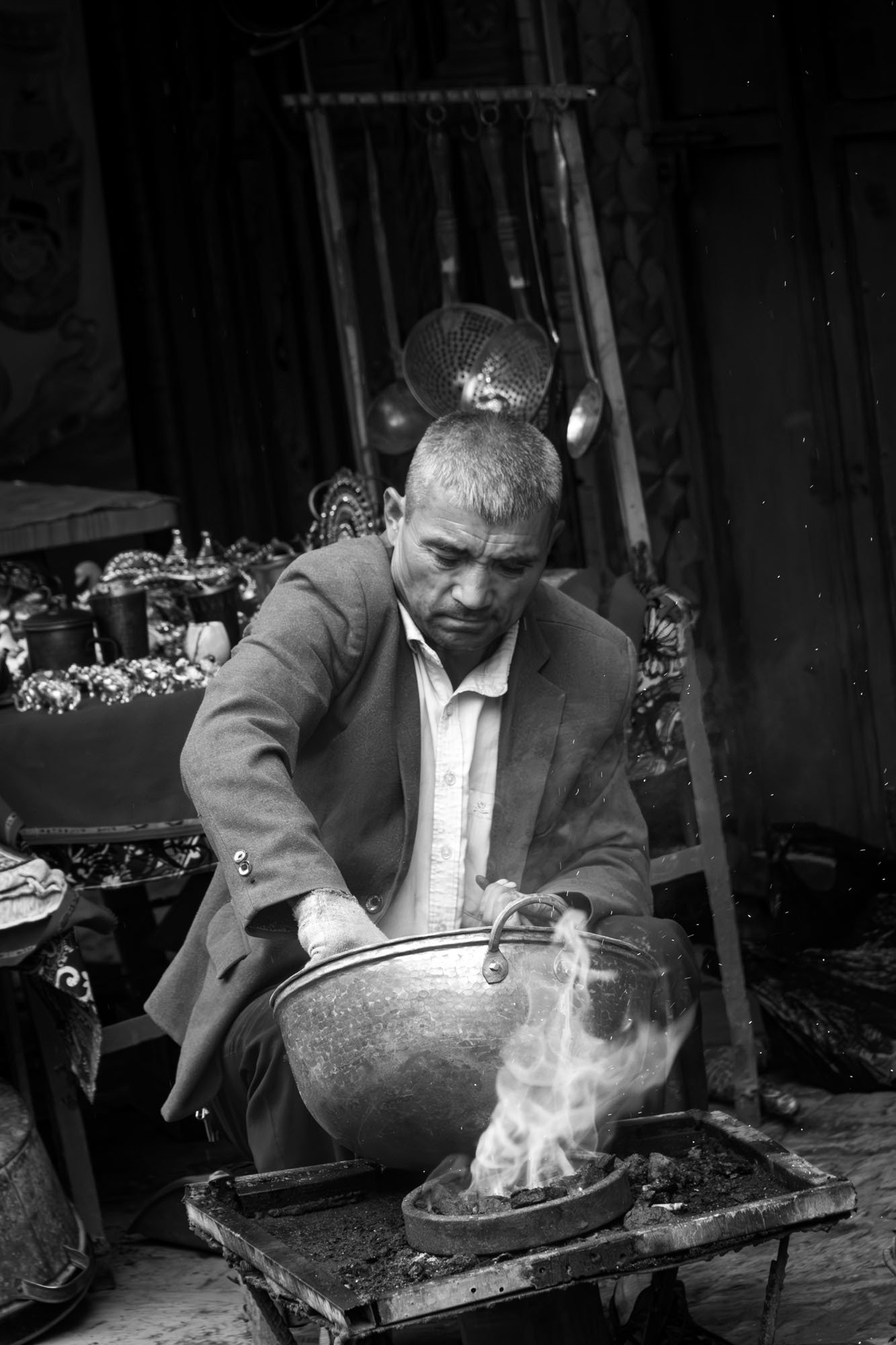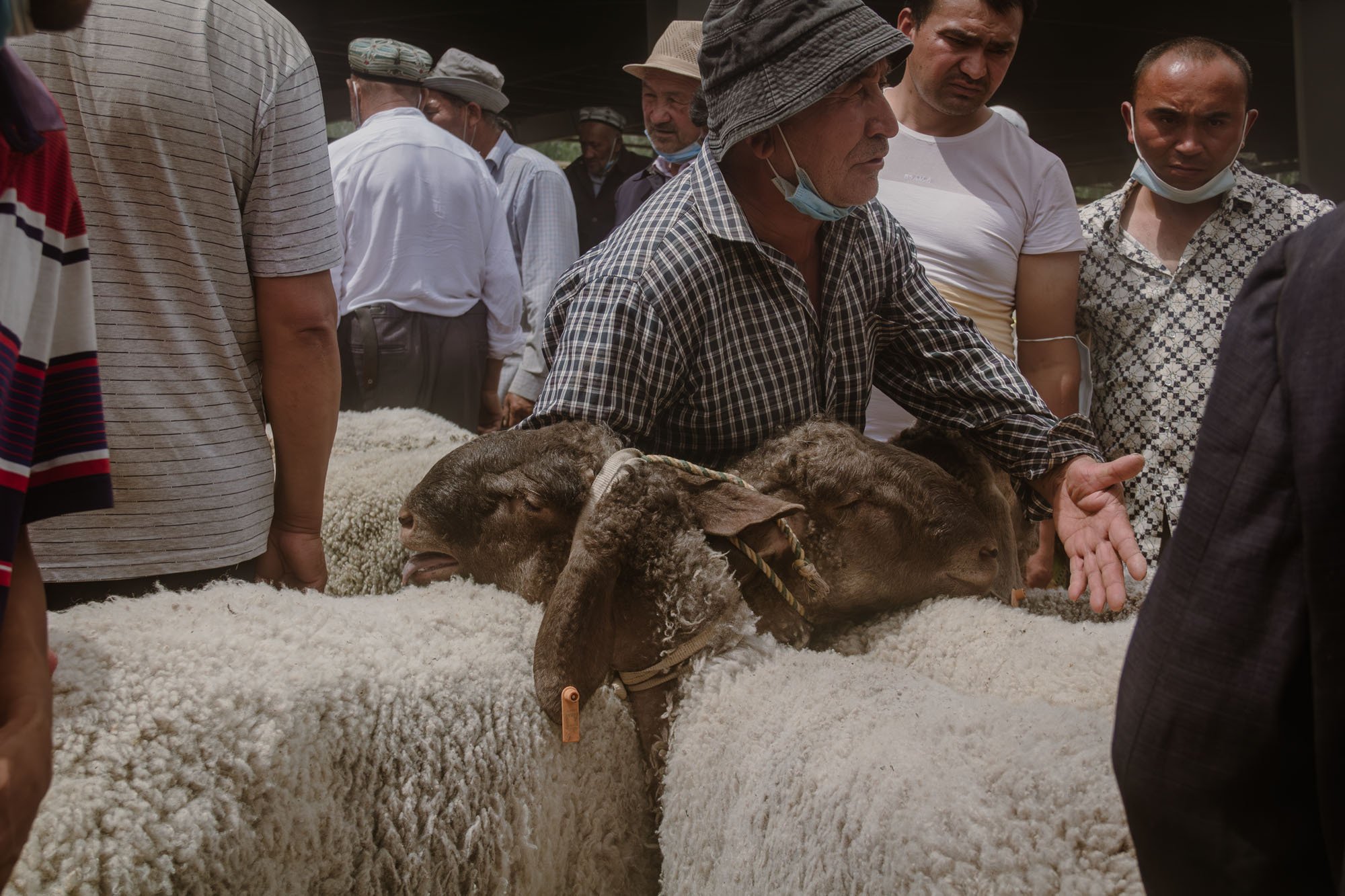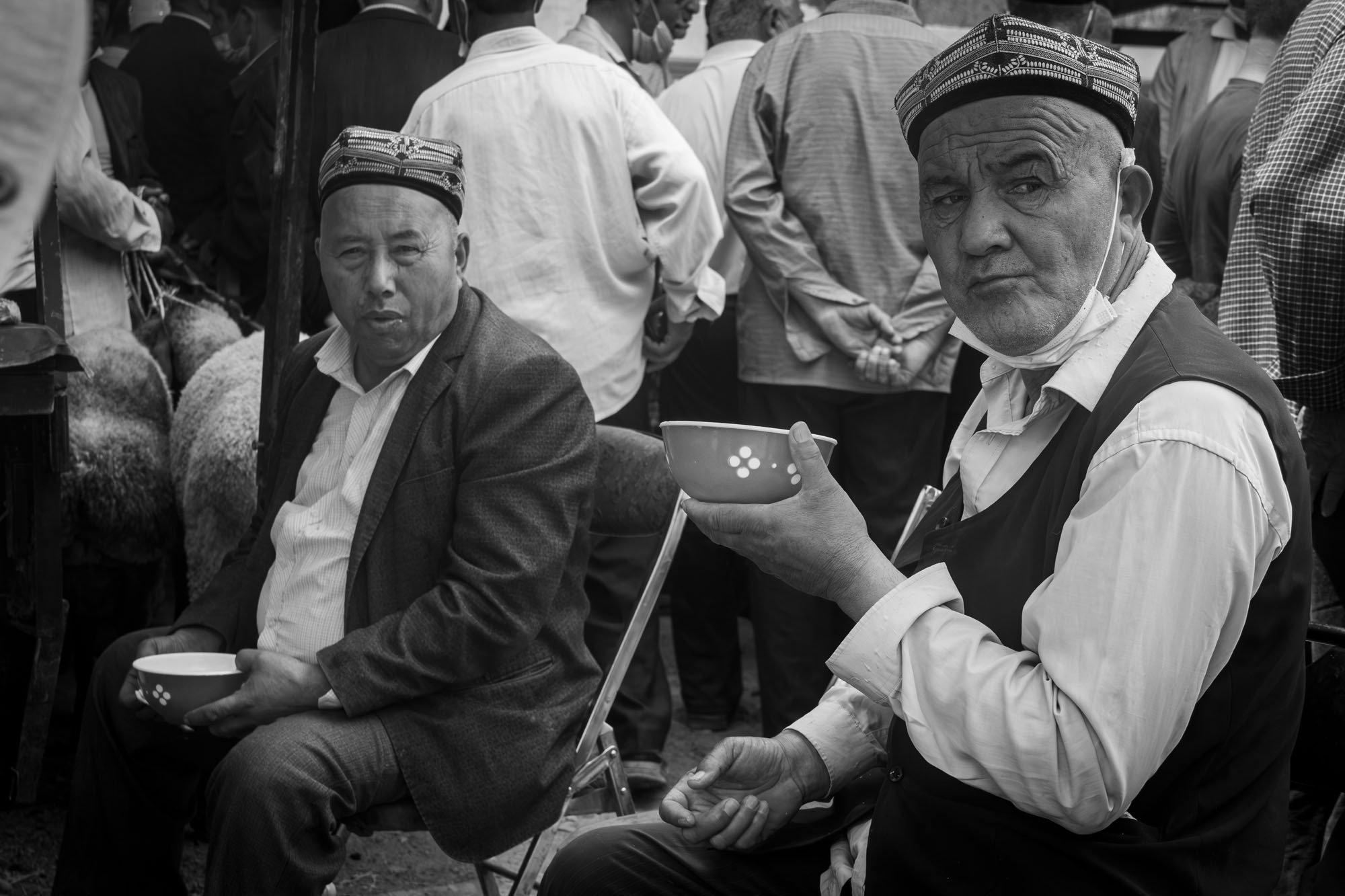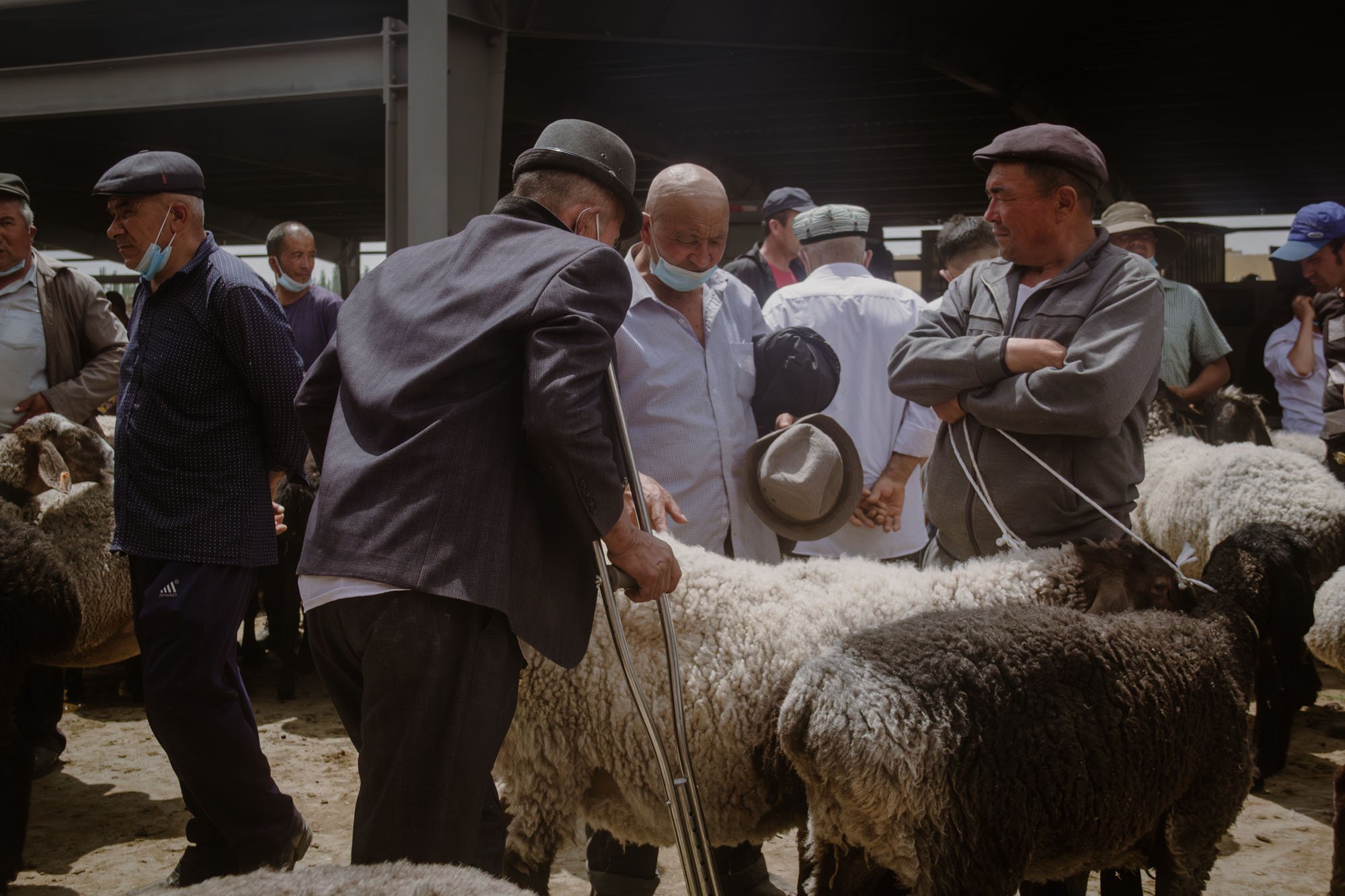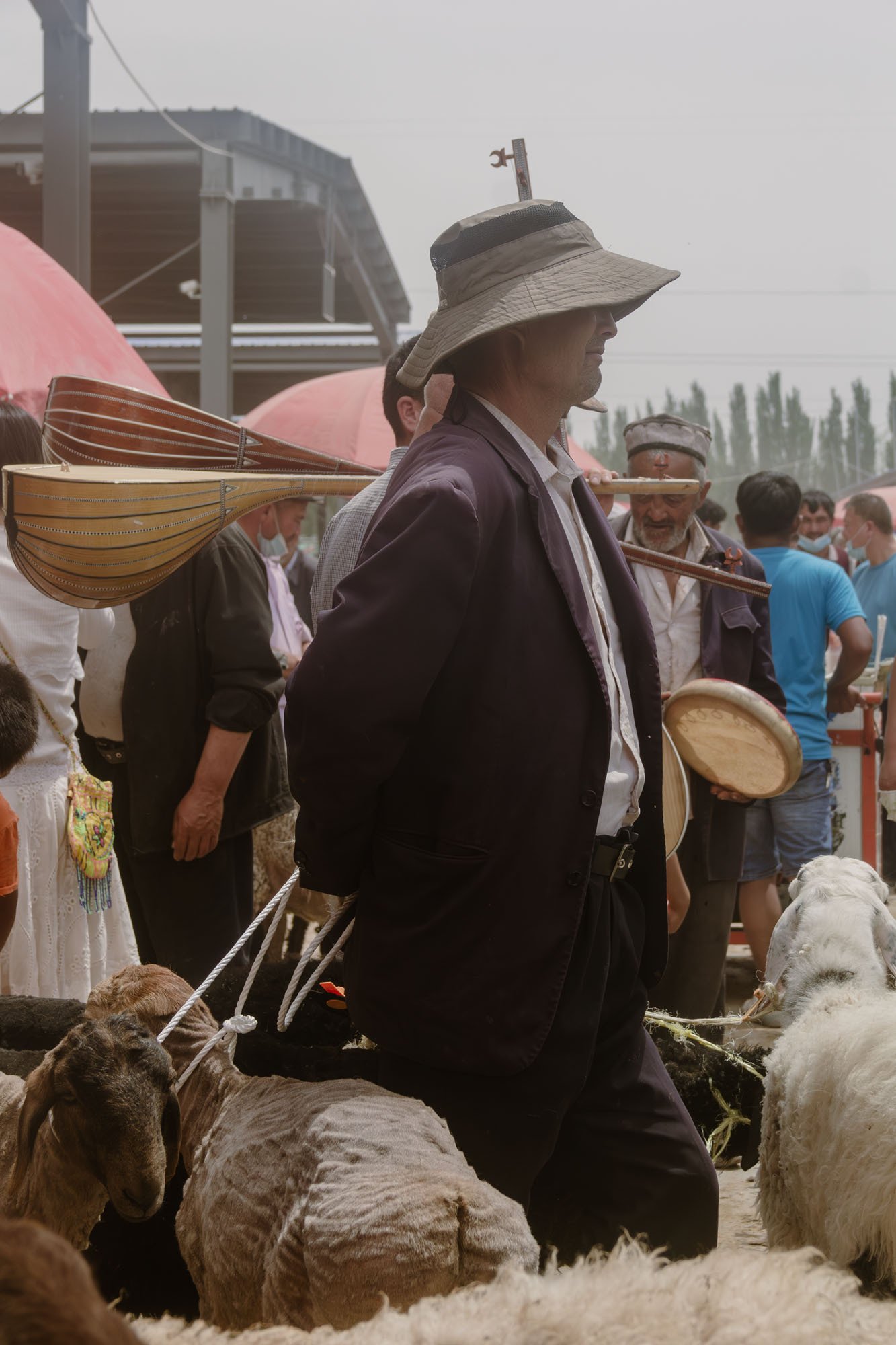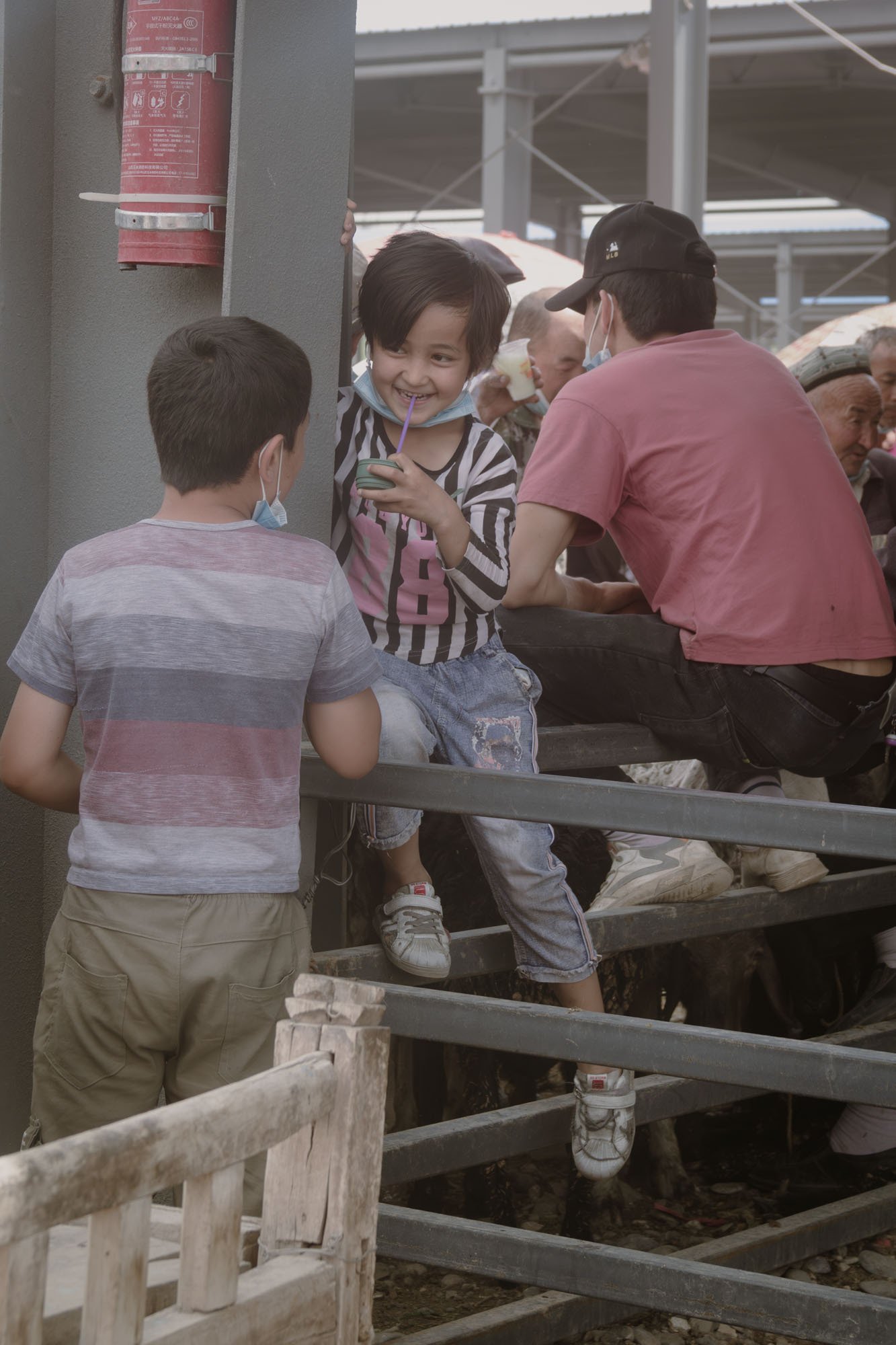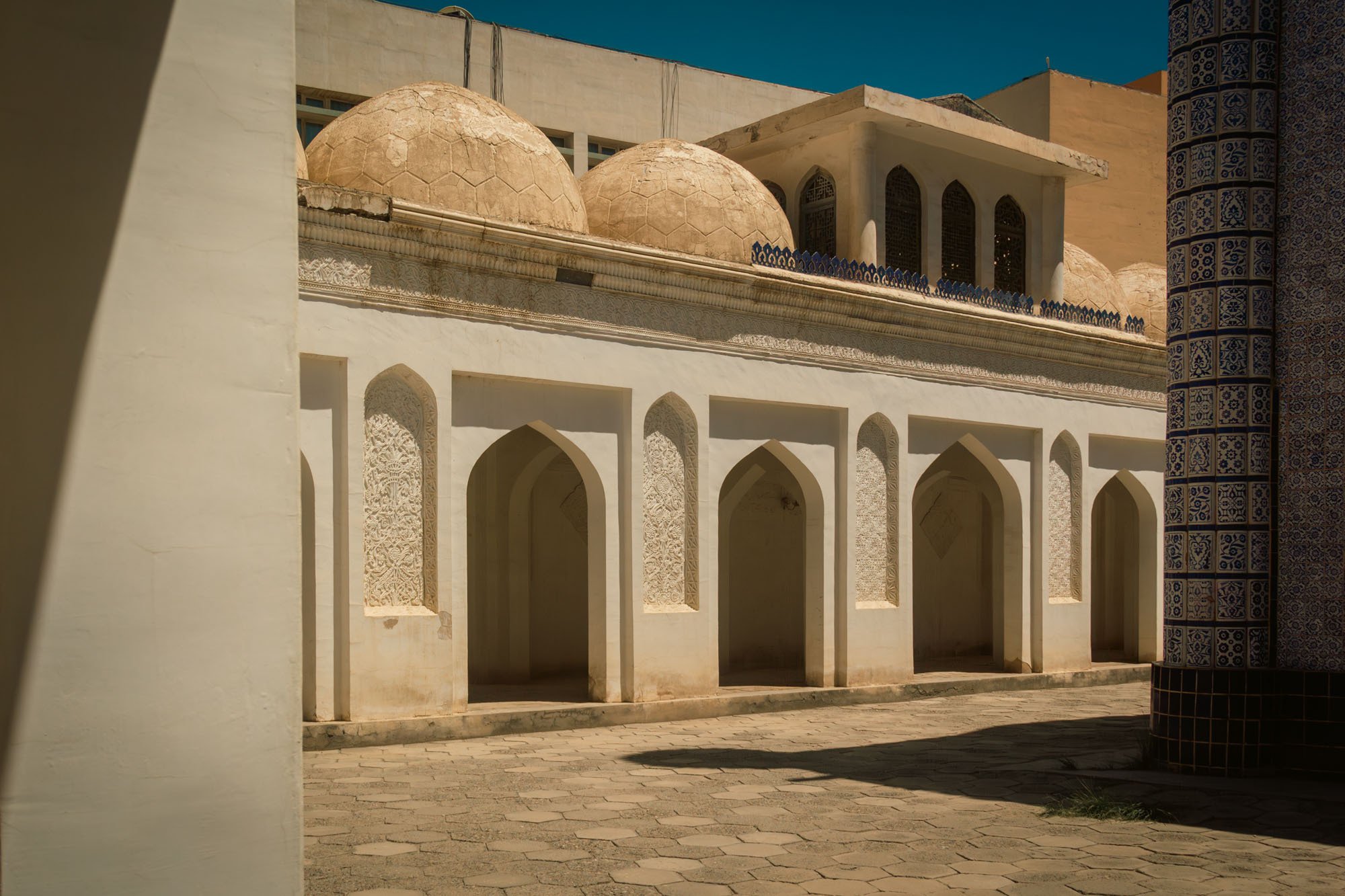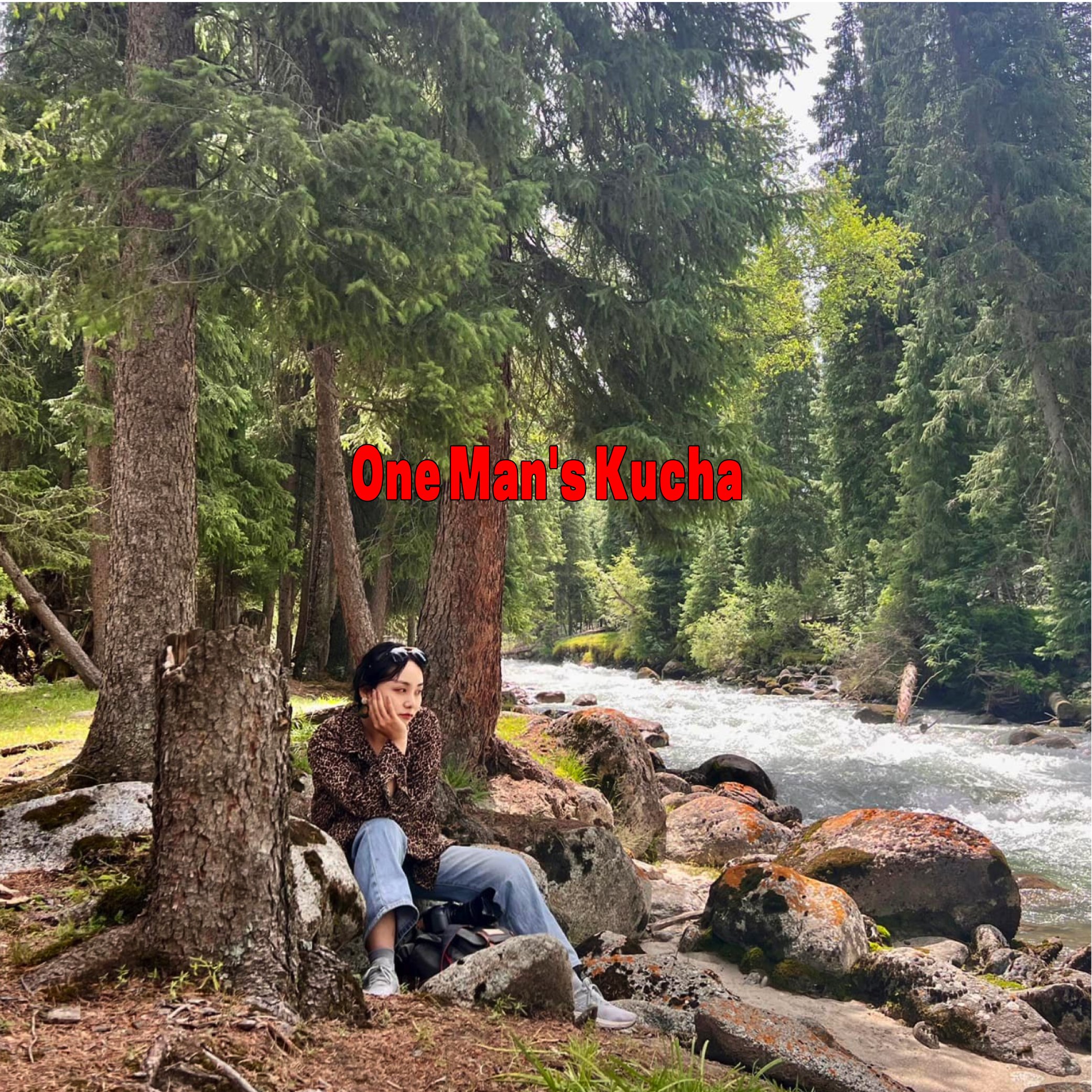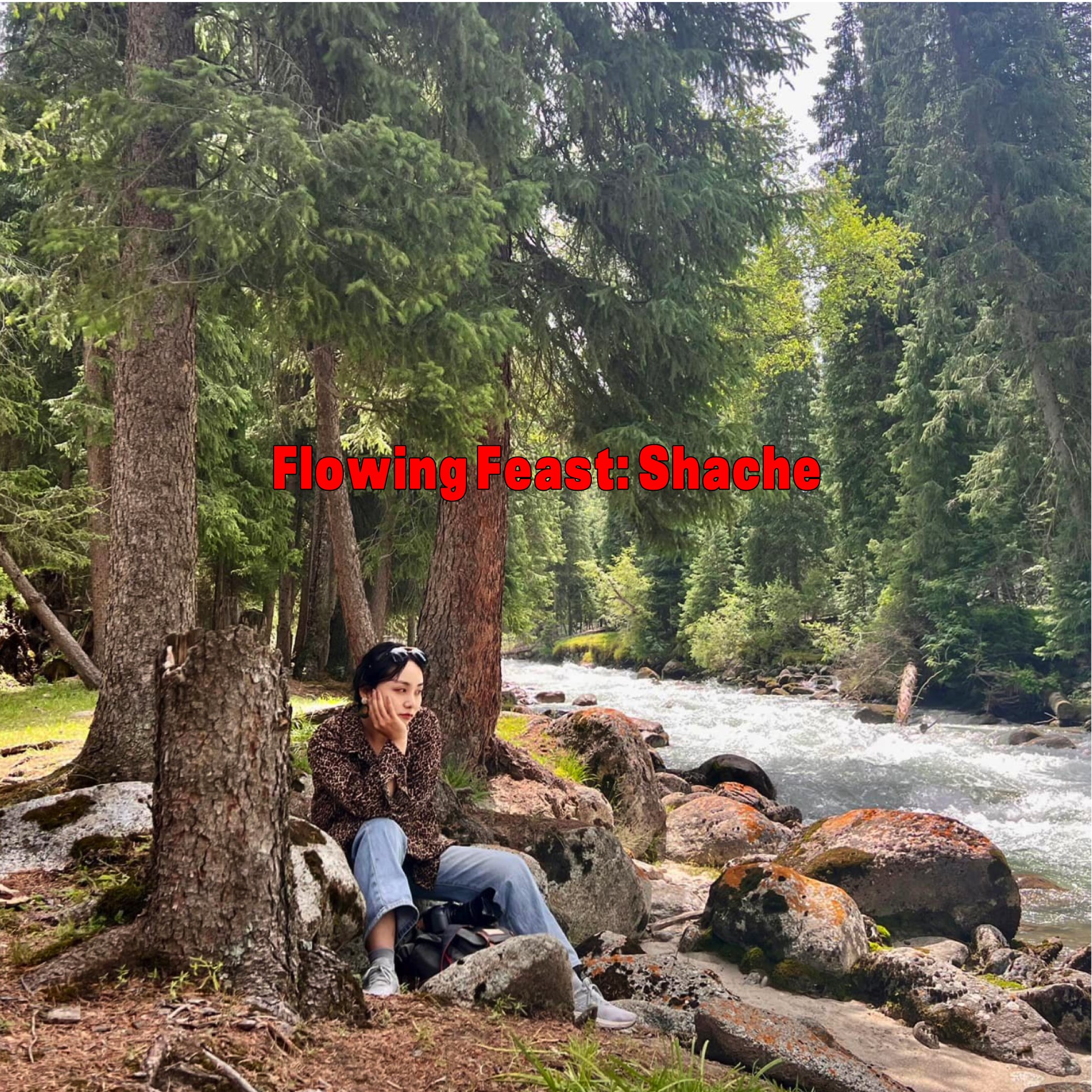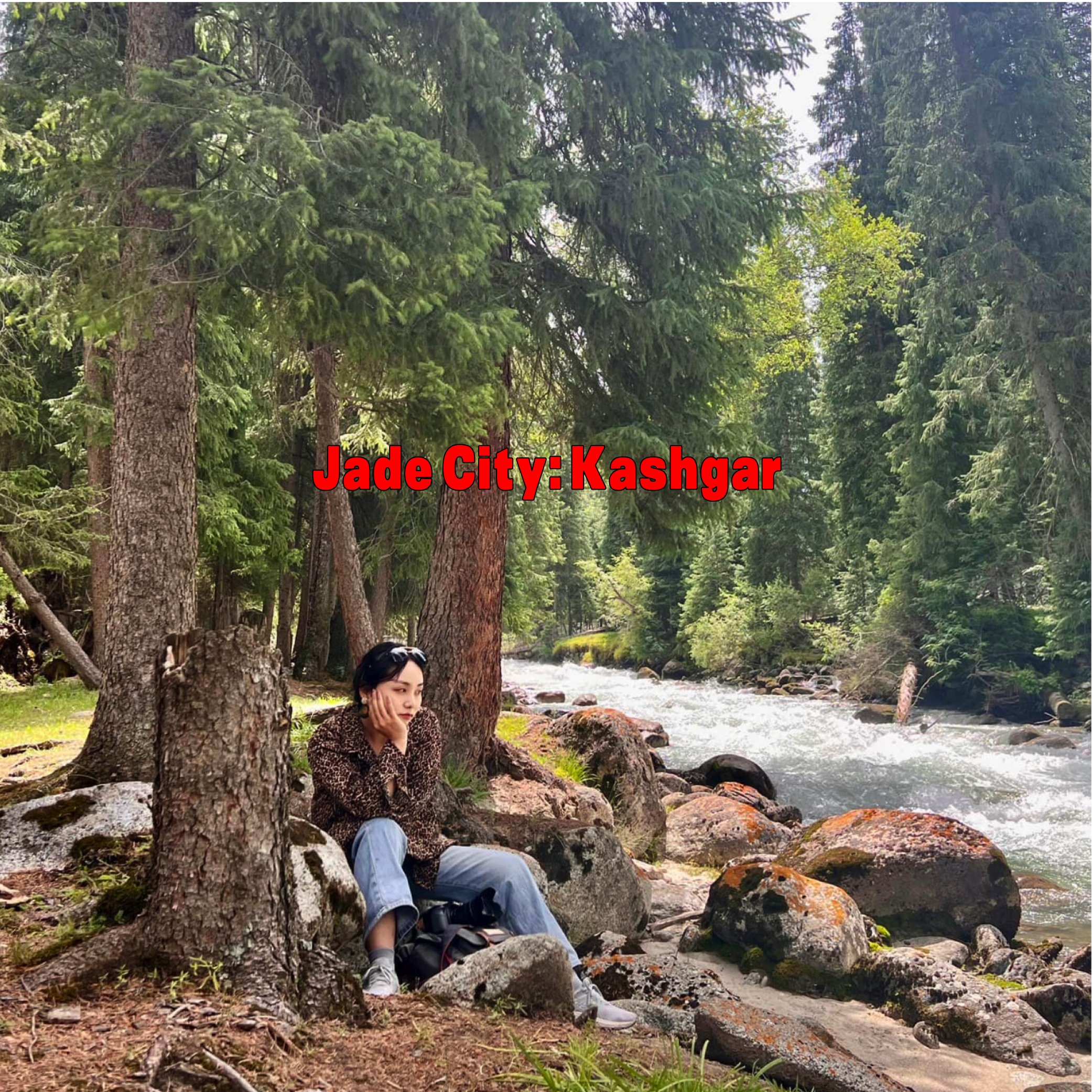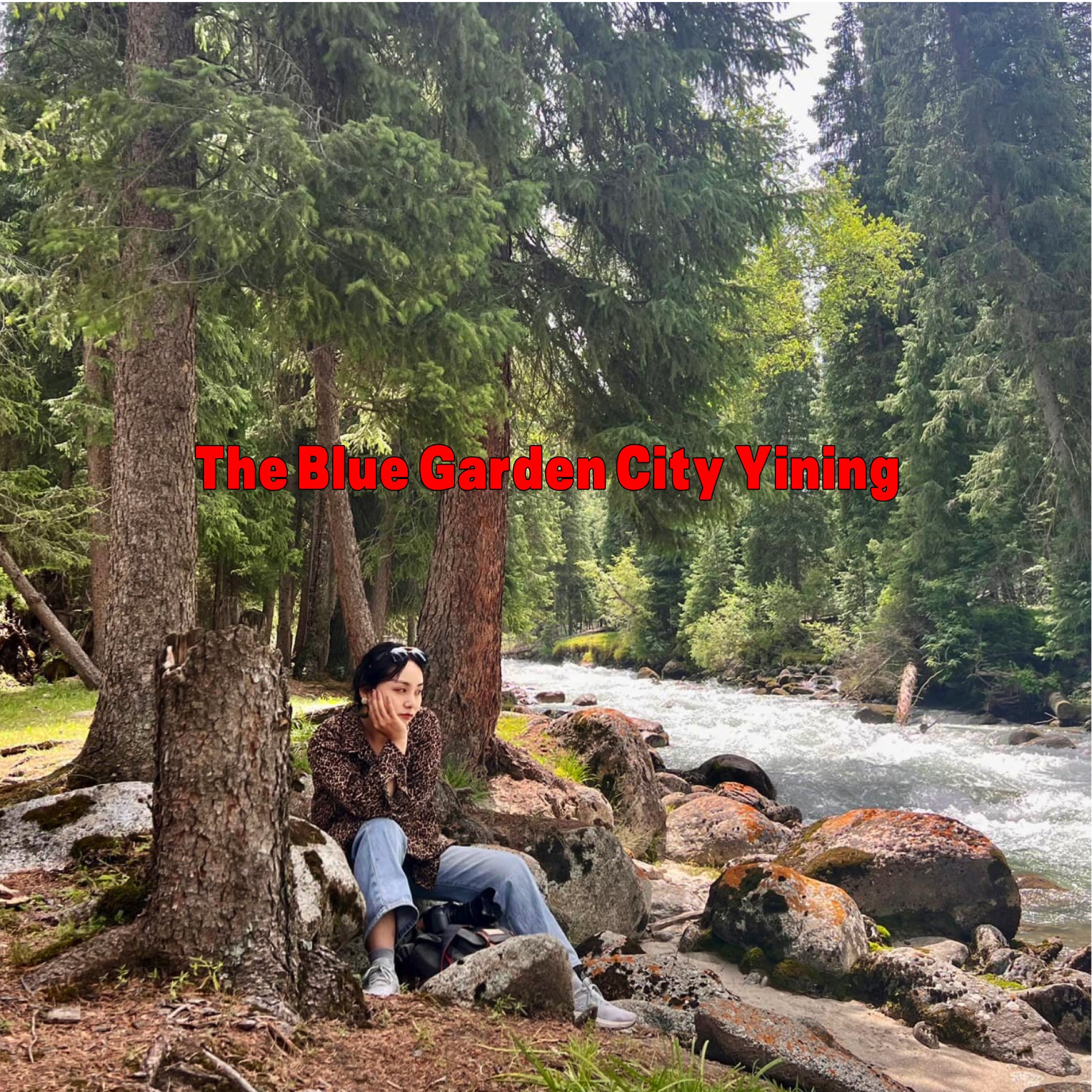My Promised Land: Xinjiang
Jade City: Kashgar
Kashgar, an ancient city that has witnessed its fair share of glory days, is a mesmerizing center of commerce. Regardless of your imagination, it is difficult to believe the reality of Kashgar. Nestled against the majestic Tianshan Mountains in the north, the undulating Pamir Plateau in the west, the towering Karakoram Mountains in the south, and the vast and boundless Taklamakan Desert in the east, Kashgar stands as a geographic wonder. Over two millennia ago, the city bustled with merchants and traders, coming and going in a flurry of activity. A diverse array of goods adorned the markets, including brocade and silk from the Central Plains, finely crafted felts from the Yuezhi, exquisite glazed artifacts from Ancient Rome, aromatic spices from Iran, luxurious linen from Kashmir, spirited horses from Uzbekistan, radiant jade from Hetian, robust ironware from Kucha, and distinctive knives and pottery from Kashgar itself. The sweet scent of fruits and melons permeated the air, bewitching the senses. Pedestrians, adorned in diverse and vibrant costumes and conversing in a multitude of languages, create a spirited mixture of voices.
The sunlight bursts through, piercing my pupils and instantly engulfing my vision in a searing white blur. An elderly Uyghur man, donning a well-tailored black suit and a light green doppa, peeks inside as he lifts the curtain. He exchanges greetings in Uyghur with the owner of the ice cream parlor before finding a table. In the blink of an eye, the ice cream parlor owner presents a cup of fresh milk ice cream on the table. With his weathered hands, the old man clasps the handle of the small glass in his left hand and scoops up the ice cream with a sleek silver spoon in his right hand. My bowl holds three scoops of ice cream, carrying the aromatic essence of saffron, walnut, and Badam. The summer days stretch on endlessly in this place, with the scorching sun bearing down upon the earth. Pedestrians meander through the streets like a ceaseless flow of water, their footsteps hastened and their brows beaded with sweat. Amidst this bustling and vibrant scene, the Uyghur language dances lightly in the air, reaching my ears from afar, akin to a melodious song.
Etigar Square stands solemnly on the opposite side of the street, resembling an open and bright heaven and earth. In the Uyghur language, "Etigar" means festival and happy square. To the west of Etigar Square, an ancient and weathered mosque called Etigar Mosque stands tall. This mosque, constructed in 1442, spans 140 meters from north to south and 120 meters from east to west, covering an area of 16,800 square meters. The gate of Etigar Mosque, constructed with yellow bricks, magnificently towers over the city. Flanking the gate, two minarets stand at a height of 18 meters each, crowned with crescent moons. At each dawn, the imam ascends the minaret, calling out to the Muslim faithful and summoning them to participate in worship. This voice transcends time and space, reverberating through history like a weighty tome, binding the city together with strength and heritage. Etigar Mosque serves as the centerpiece of the old city, from which thirteen main streets and hundreds of alleys radiate. These intertwining streets and alleys, lined with earth-colored houses constructed from raw earth and poplar wood, are densely clustered together, creating a unique and enigmatic atmosphere. It feels as if one is entering a labyrinth that conceals countless stories and a rich history.
Passing through the Etigar Mosque, I follow the lead of the music and climb the aged stairs as I step into an old tea house. Bright red carpets, reminiscent of pomegranates, cover the kangs on both sides of the hall, and the walls are adorned with a wide array of musical instruments, paintings, gourds, and doppas. Spacious windows open around the room, allowing a gentle breeze to blow in. The local residents lay comfortably on the kangs, enjoying the aroma of tea. I push open the blue door, revealing a beautifully carved balcony. On the stage, a group of folk artists showcases the exquisite beauty of traditional Uyghur music, accompanied by enchanting instruments such as the rawap, dabu, and piccolo. They smile and nod at each other, their eyes meeting during their performances, silently understanding one another. One of the elderly artists begins to chant, his cool voice reminiscent of the wind whistling across the Pamir Plateau. A plate of yellow sugar and a pot of rose tea are placed on the guests' table, a traditional gesture for those who have traveled from afar. Standing on the balcony, overlooking the city, well-dressed people move through the streets, vendors stand in front of their stores and enthusiastically shout in simple Mandarin, while in the distance, blacksmiths, coppersmiths, and silversmiths hammer away, accompanied by the continuous hum of looms.
In the old city of Kashgar, the narrow and deep walking spaces create an intricate network of countless alleys, resembling slender veins densely interwoven. The aged floor tiles beneath our feet bear witness to the passage of time, their surfaces weathered and uneven, resembling a totem that depicts the ebb and flow of centuries. These tiles possess a language of their own, communicating messages to those who tread upon them through their unique shapes and arrangements. Hexagonal tiles serve as beacons, guiding wanderers towards the main roads of Kashgar. Rectangular tiles tilted to the right indicate the location of residents’ homes. Tiles shaped like upward arrows suggest the path continues onward, while the flat horizontal tiles signify the end of the road. Such a well-designed layout of tiles not only prevents people from getting lost in the old city of Kashgar but also ensures a seamless journey towards their intended destinations.
In front of each house, an enchanting array of planted pomegranate trees, fig trees, oleanders, and various flowers grace the surroundings. Near the doorway, housewives dressed in graceful etles dresses gather in a circle, adding an endearing charm to the scene. They can be observed squatting, standing, or sitting, each striving for the utmost comfort. Amidst gentle whispers, captivating tales unfold from their lips, as if time itself adopts a leisurely and unhurried pace within this setting. In contrast, gentlemen donning stylish suits assemble in front of the doorway, forming a solemn line with furrowed brows. Engaging in meetings, they discuss the intricacies of daily events or negotiate significant decisions, lending their wisdom and strength to the family's advancement. Meanwhile, two school-uniformed sisters are seated on the kang before the door, wholly absorbed in savoring their noodles. Oblivious to the fluid movement of people on the bustling street, they are completely immersed in indulging in their meal, relishing every moment.
The summer sun mercilessly scorches my skin, yet I refuse to let it deter me from stepping through the open door into the welcoming embrace of this home. Inspired by the traditional Kashgar house layout, the building has been meticulously crafted by its owner, radiating an ambiance of tranquility and beauty. Along the entire length of the house, a corridor adorned with intricate floral motifs faces the enchanting courtyard. This spacious and inviting area offers a place for family and friends to cool off, relax, and gather, with a large kang covered in a vibrant, colorful carpet. A grape arbor serves as a clever connection between the corridor and the courtyard, and the vibrant green grape vines that climb all over it bring a sense of life and sweetness to this enchanting space. However, as the family's size grows, the space gradually becomes constrained, prompting the need for expansion in all directions, including the construction of additional floors. Consequently, many earth buildings rise gracefully from the ground, nestled within the ancient city walls that tower over ten meters high. These earth buildings lean resolutely upon the sturdy structure, evoking a sense of a colossal bunker and silently conveying the deep attachment people have towards their home and native soil.
I stroll along the rows of arcades, weaving my way through the interlocking homes, and casting my gaze upon the flourishing earth buildings that seem to grow without restraint. As I reach the vibrant intersections, I am met with a tapestry of lively trade markets and majestic mosques. These places have a magnetic pull, enticing people to engage in the exchange of goods, commerce, and beliefs, creating an enchanting atmosphere that lingers in the air.
In the old city of Kashgar, the streets and lanes bear names inspired by the industries they represent. For instance, one may come across Pottery Lane, Garment Lane, Iron Pot Lane, and Sack Lane, each reflecting the unique trade it embodies. The artisanal workshops that are clustered together become markets for the sale of their respective products, such as the Hat Bazaar, the Jewelry Bazaar, and the Ironware Bazaar. Here, skilled craftsmen diligently sit before their doors, their hands tirelessly working on their creations. They honor the traditions of their craft, passing down their expertise from one generation to another. It is within this realm of unparalleled craftsmanship and artistry that people seek out objects that not only meet their daily needs but also embody beauty and innovation.
About eleven kilometers from the city walls, on the outskirts of Kashgar, lies a unique Cattle and Sheep Bazaar. This bazaar is divided into two sections: the livestock market and the food stalls area. In the livestock trading market, a lively and vibrant scene unfolds as bustling crowds surround the livestock. The strong smell of cow and sheep dung permeates the air, seemingly reaching the clouds. Cows are tethered with ropes to wires, while sheep are grouped together within enclosures. Prospective sheep buyers carefully examine their mouths and feel their bodies to assess their age and health. Once they have chosen their preferred animals, buyers and sellers, shake hands and utilize finger gestures to negotiate and determine the ideal price. The entire process is conducted non-verbally, relying solely on hand gestures for communication — questioning, bargaining, exerting price pressure — until a deal is reached and hands are finally shaken in agreement.
The food stalls area, nestled within covered sheds, tantalizes visitors with an array of delectable delicacies. Ice sellers deftly shovel crushed ice onto a large block, then pour sweet honey and milk over it, creating a visually stunning display of ceremonial shaved ice. Mutton vendors expertly skin the entire sheep, remove its entrails, and separate the meat from the bones. They meticulously slice the fresh meat into strips, which are then hung for display, while the sheep's head rests at their feet. At the entrance of each restaurant, large pots simmer over wood fires, cooking sizable chunks of lamb in steaming broth. Customers take turns sitting at long tables, savoring dishes like Xinjiang rice, roasted stuffed buns, Xinjiang noodles, naans, lamb kebabs, and lamb broth. Additionally, various fruit stalls offer a wide selection of fruits such as watermelon, figs, cantaloupe, grapes, and pomegranates. People gather around these stalls, relishing the sweetness of the fruits. The luscious juices gently trickle down their fingertips, merging with the dust and performing an everlasting dance of life upon the earth.
"Life is like a fleeting breeze, passing by in a flash. Who can seize it and keep it from slipping away? One should not grow complacent with luck, for it ebbs and flows; nor should happiness be naively trusted, as it too comes and goes." These profound words were penned by Yusuf Khass Hajib, a revered Uyghur poet during the Karakhanid Empire, in his epic narrative poem, "Kutadgu Bilig". A thousand years ago, Yusuf, a noble and inquisitive young man, embarked on a arduous journey across countless mountains in pursuit of knowledge, leaving his birthplace of Balasaghun behind for the regal capital of Kashgar. Within the confines of the Royal Islamic Institute, he delved deep into the boundless sea of learning. In 1085, he bid farewell to the mortal realm in Kashgar, leaving in his wake a profound legacy of artistry and wisdom.
To this day, standing proudly beyond from the city walls, an awe-inspiring mausoleum resembling the sepulcher of a solemn guardian can be found. This architectural masterpiece exudes magnificence and grandeur, built in the distinct style of traditional Uyghur art, it is a true marvel to behold. The exteriors of the structures are adorned with breathtaking blue glazes, while time-honored and intricate patterns grace the majestic pillars. When the radiant sun casts its warm embrace, the glazes shimmer with a pure, profound light, emanating a vibrant glow as if they were a blazing fire of life, enlivening the very air around them. These structures hold an air of mysterious enchantment, as though carrying within them the deep wisdom and profound emotions of Yusuf Khass Hajib, serving as a tangible embodiment of his poetry and infusing Kashgar with a vibrant pulse of life force.
Kashgar, known as the "jade place," a name that embodies all that is good and pure. In this city, the pathways bear witness to the vibrant footsteps of youth, their lives rushing by like a fleeting wind. Oh, the yearning for life! It flows freely, permeating every corner. No matter how arduous the realities of life may be, we never relinquish our desire for an ideal future. As daylight wanes, the setting sun casts its gentle glow, painting the streets and alleys in hues of ochre-yellow. The weathered walls, kissed by the sands of a century, acquire a unique radiance. Bright residential doors are adorned with an array of colors, while copper door rings glisten like precious jewels. Delicate wooden lattice windows on the upper floors peer out bashfully, akin to blossoming buds. Elementary school children, in groups of twos and threes, gleefully make their way home, their innocent smiles lighting up their faces as they playfully chase one another, walking side by side. Teenagers, brimming with the boundless energy of youth, kick a soccer ball under the setting sun, their elongated shadows dancing upon the ground. At Etigar Square, a Uyghur woman gracefully perches on the steps, skillfully strumming the melodious strings of the dutar, capturing the attention of those who gather around, listening in serene stillness. Her music, akin to a captivating epic, recites a profound tale, weaving a narrative as deep as the soul. Kashgar, its name whispers on my lips, and if I could hold her once again, I would grasp her tightly within the palm of my hand, spreading out her beauty beneath me like delicate silk.
